General Rules for Choosing Kitchen Wall Colors
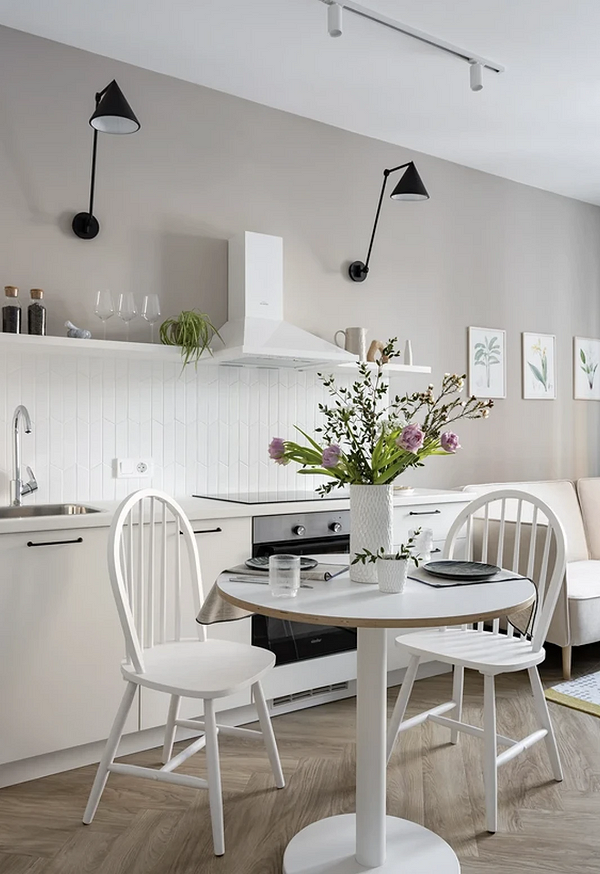
Each shade in the interior not only has an emotional impact but also creates a certain optical effect. Since in kitchen design, the color of the walls occupies a significant part of the palette, it’s important to remember this.
Here are some universal rules for choosing a kitchen wall color:
- Light shades visually expand space, while dark ones conceal it. This isn’t always bad: for example, if you want to distinguish the cooking area and separate it from the living room or dining room, this approach is appropriate.
- Cool palettes look elegant and expensive but are less cozy. Such surfaces also appear slightly further away than they are. On the other hand, warm tones have the opposite effect and are perceived as closer and cozier.
- For a room with a small window or where there is simply little light, sunny shades of yellow and orange that create the feeling of warm rays in the room are suitable. You can boldly paint the walls in these colors.
- The brighter the contrast, the more it draws attention to the actual proportions of the room. If the kitchen is tiny, it’s better to make the walls monochrome and in the same color as the ceiling, as well as without strong contrast with the floor. This will make the area seem larger.
Regarding the number of elements in the palette and their ratio to each other, if you’re not an experienced colorist and don’t want to experiment, it’s best to follow the classic principle of 60/30/10. In this case, the walls will occupy those 60%, so their color — the main one — ideally should be neutral.
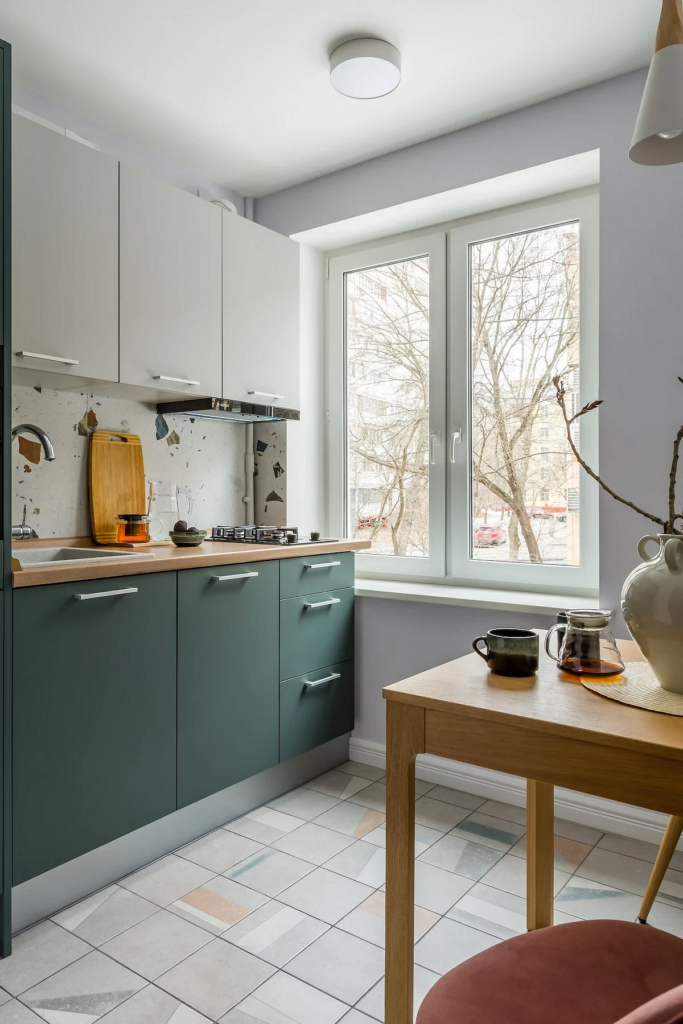
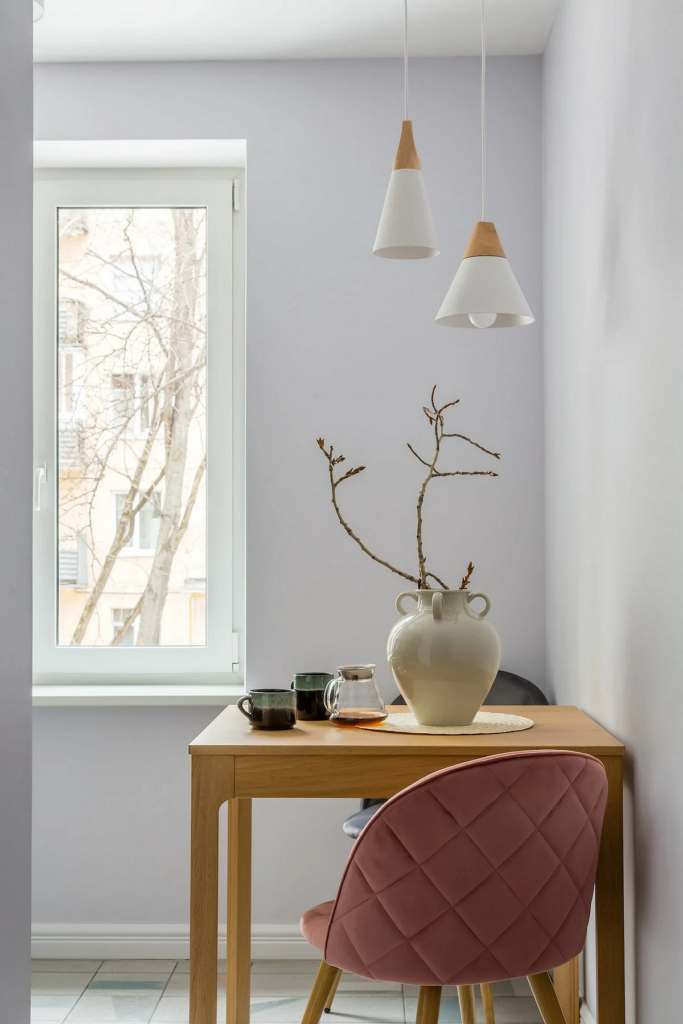

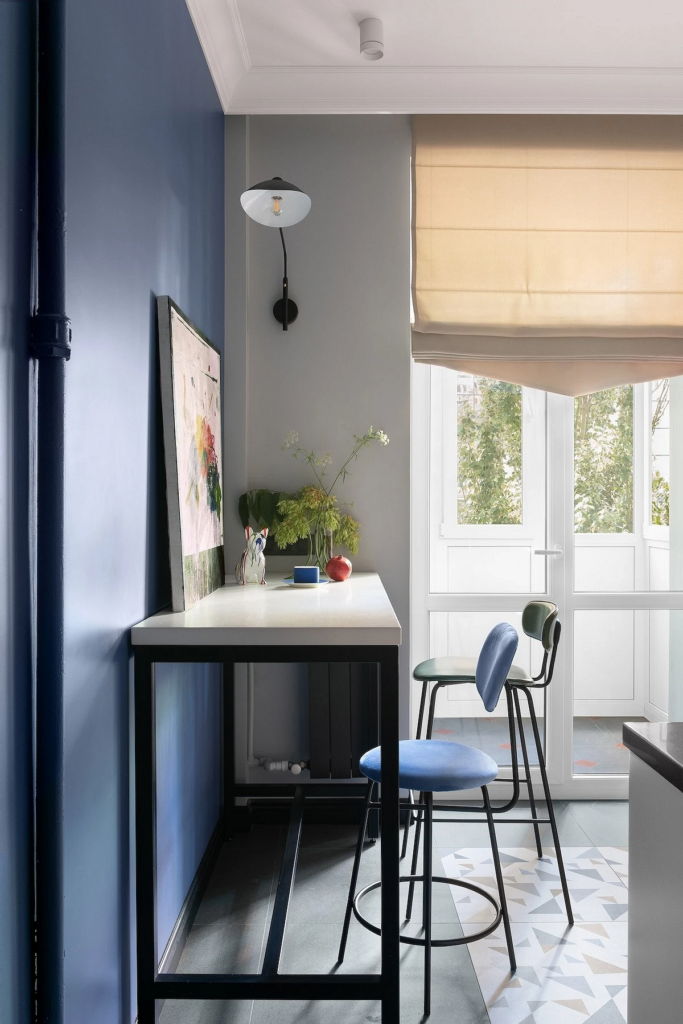
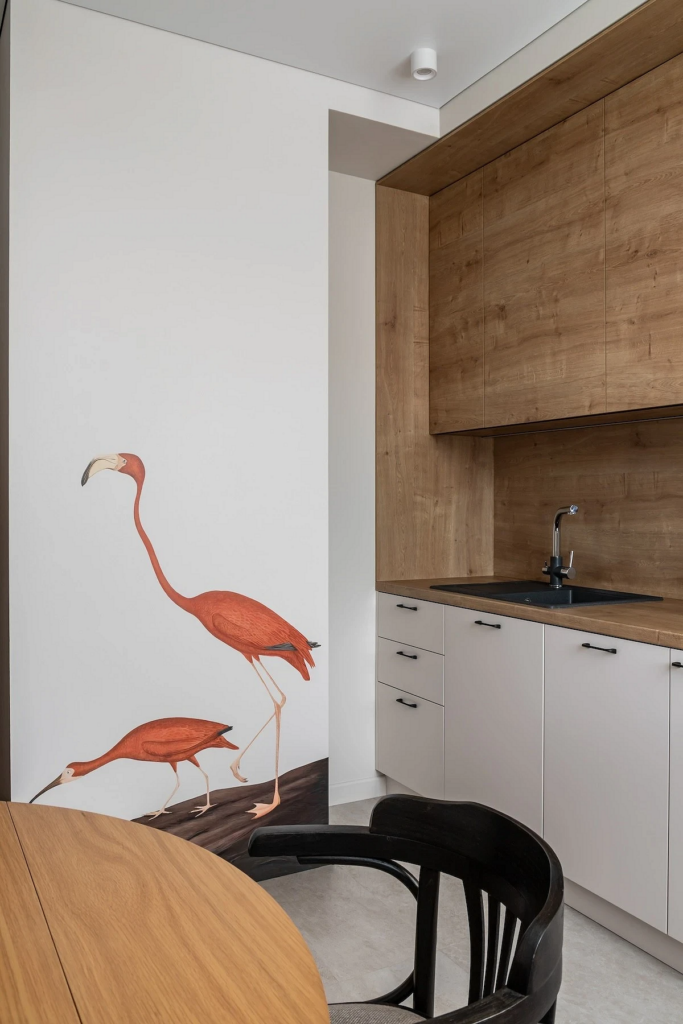
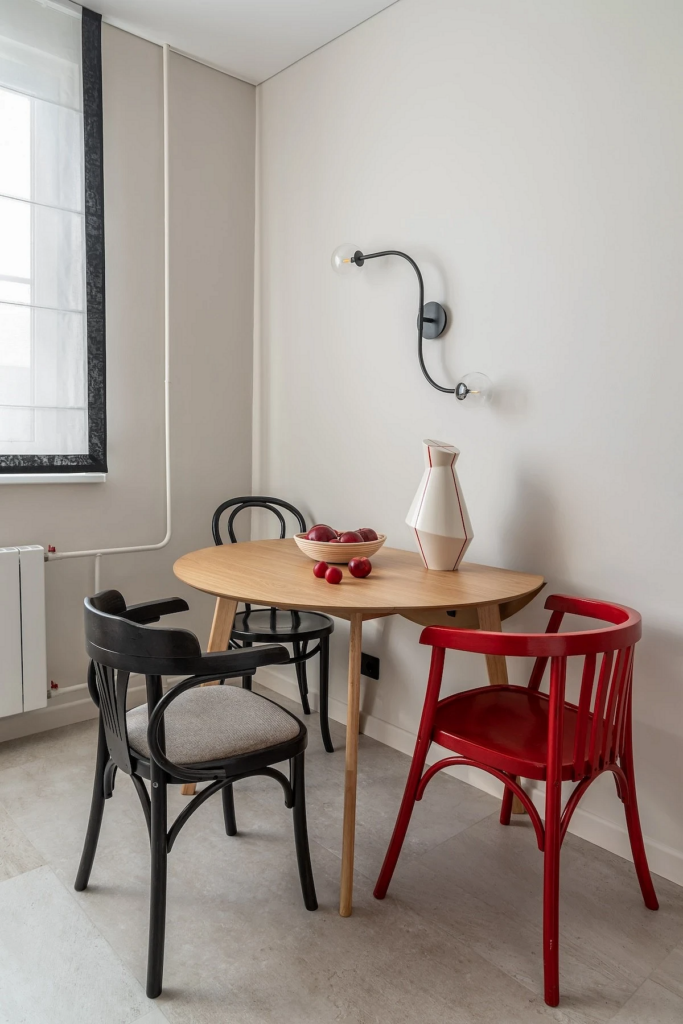
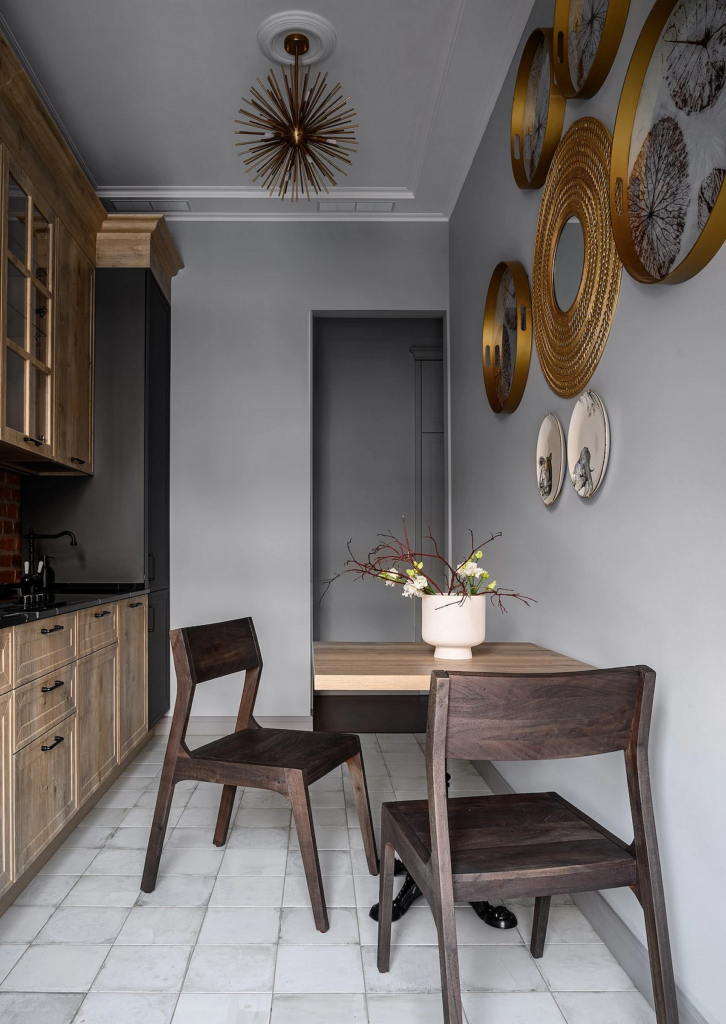
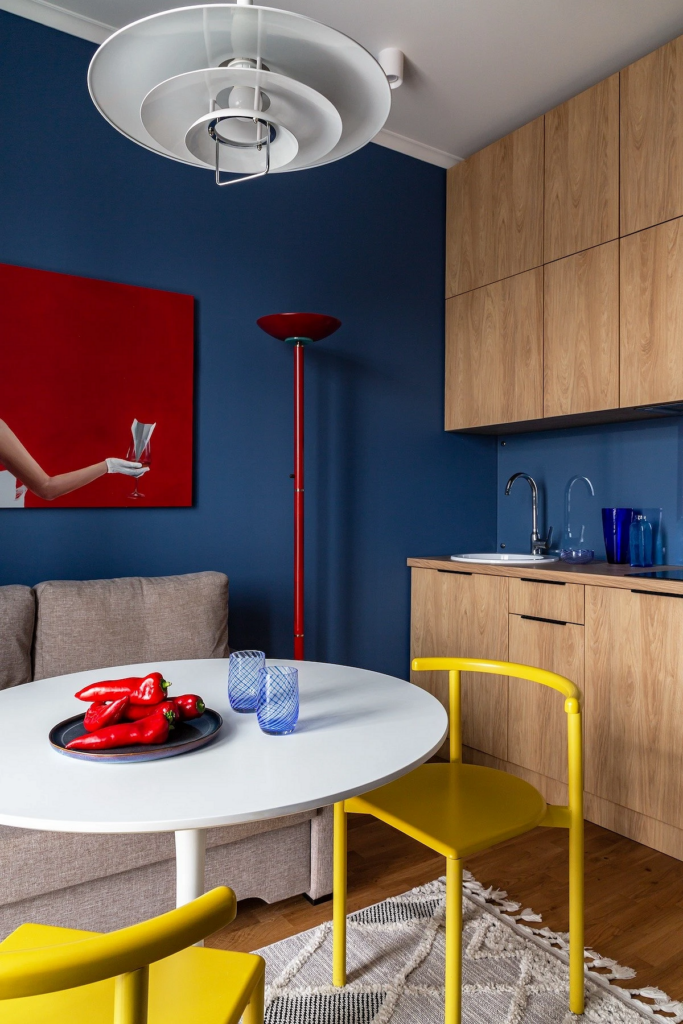

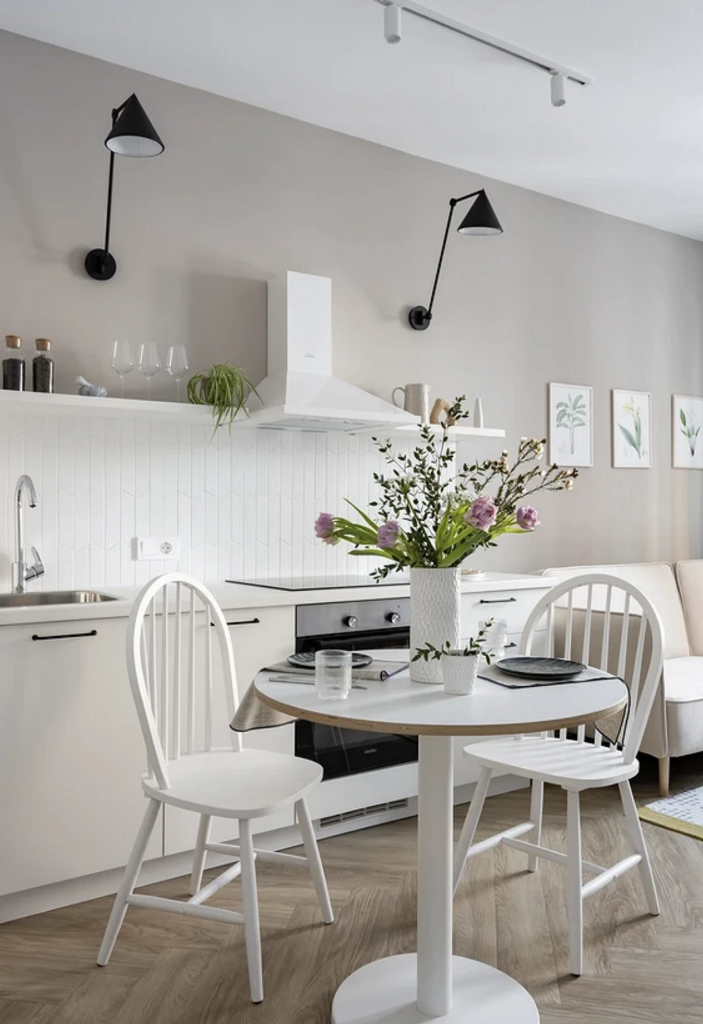
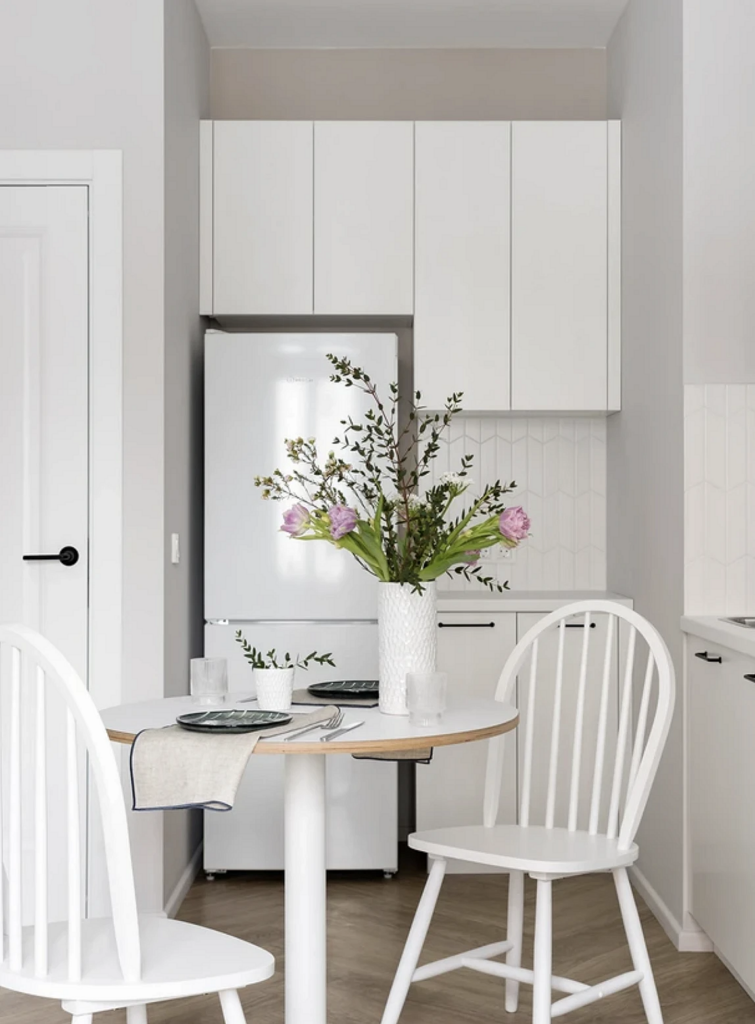
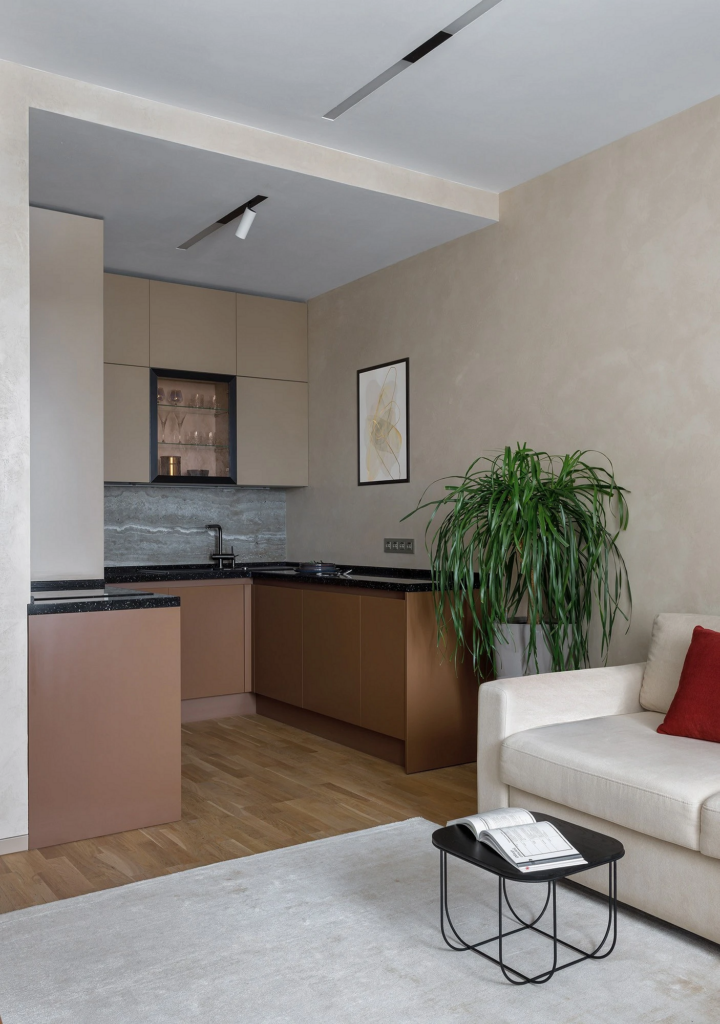
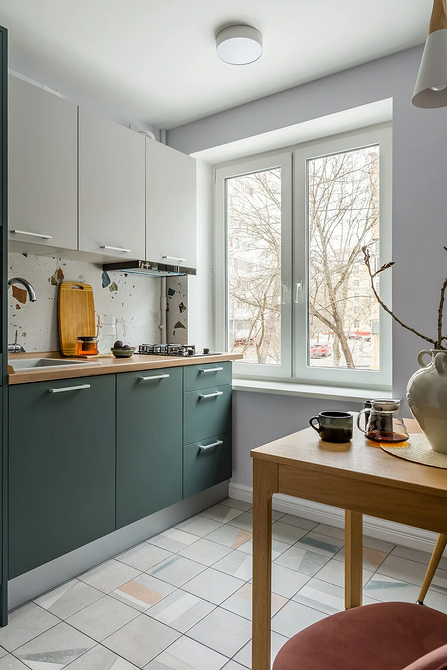
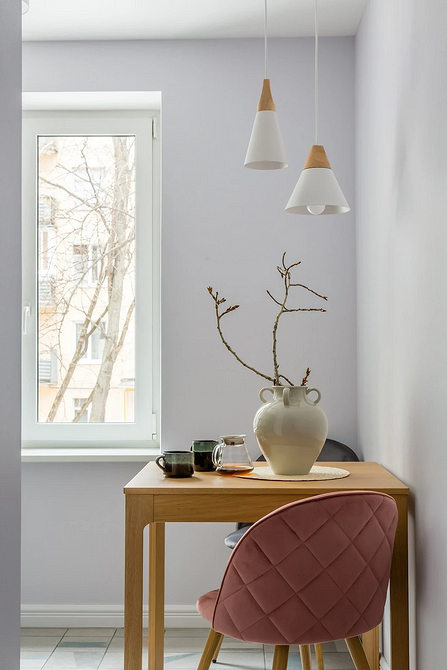

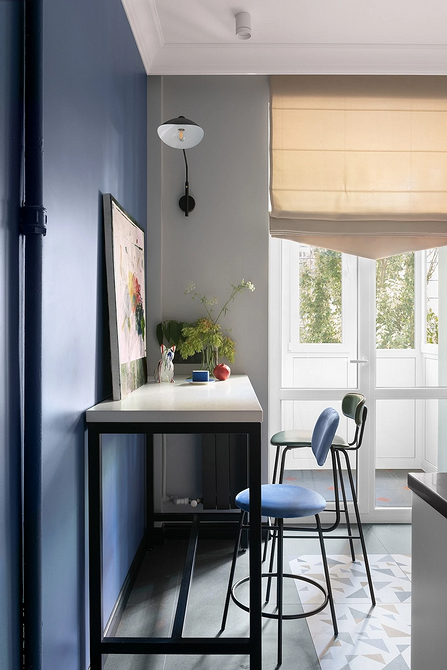
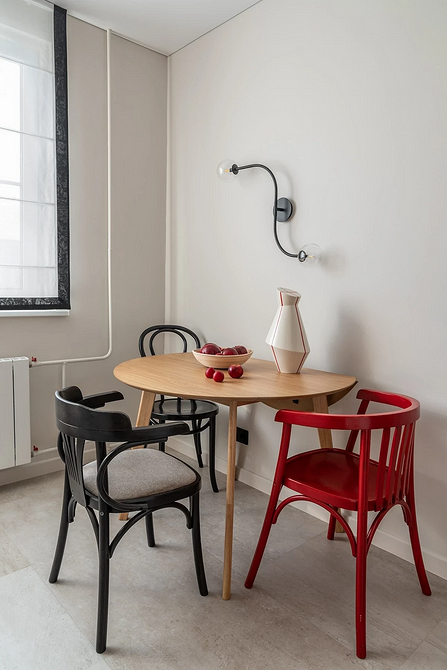
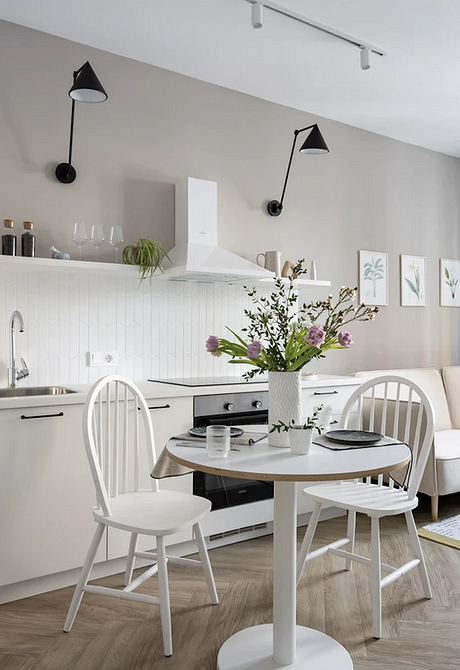

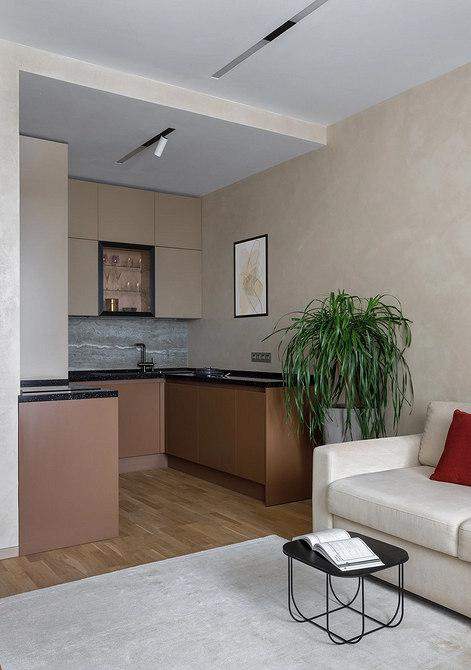
Light Kitchen Wall Colors
The most popular solution for choosing wall colors in a small kitchen is light colors. They visually enlarge the space, which is particularly important given the typically large amount of furniture in this room.
White
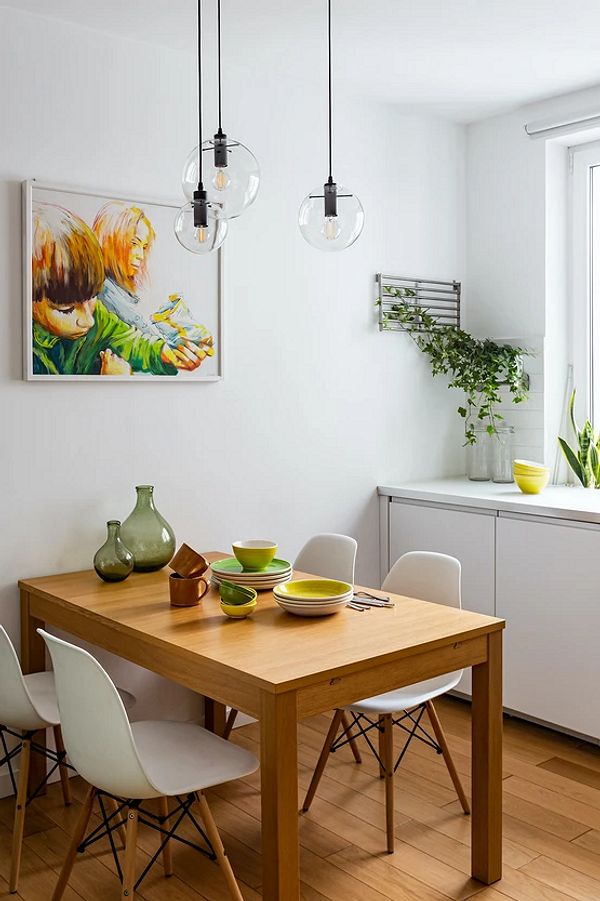
White color is the ideal solution for a narrow or small kitchen with low ceilings. The smaller the space, the lighter the shade it suits. Such walls combine well with dark furniture and allow it to fit into a small space. White, being achromatic, is a reason to try creating a stylish black-and-white combination. Since dark furniture and accessories are used as small inclusions on a white base, the interior won’t feel overloaded.
Another option is the use of bright, contrasting colors. These can be patterns on the wall itself or bright furniture that would be challenging to use with any other background.
If you’re unsure about what color to make the walls of a white kitchen, remember the simple yet beautiful combination: light on light. White furniture and light wooden accessories on a neutral background fill the interior with lightness and freshness.
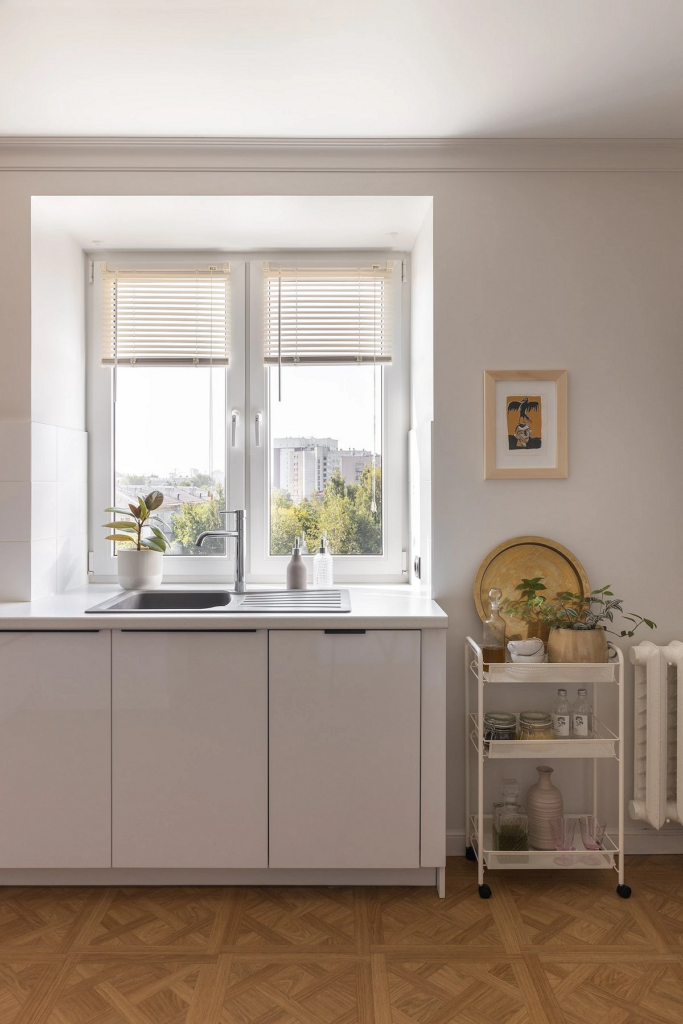
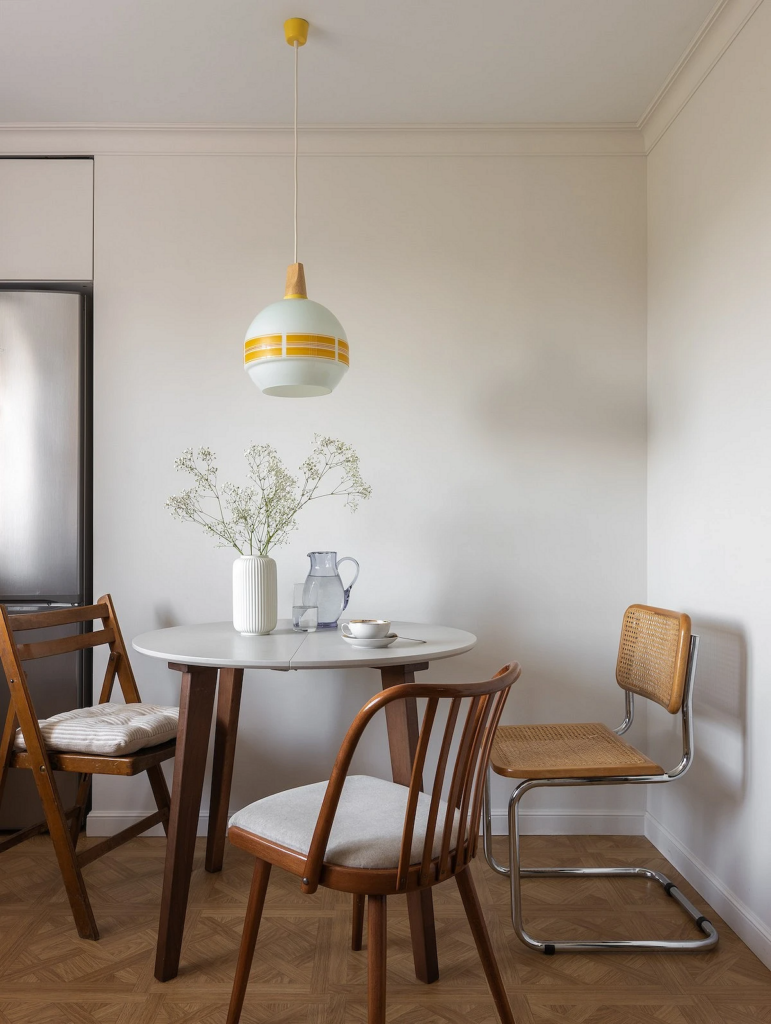
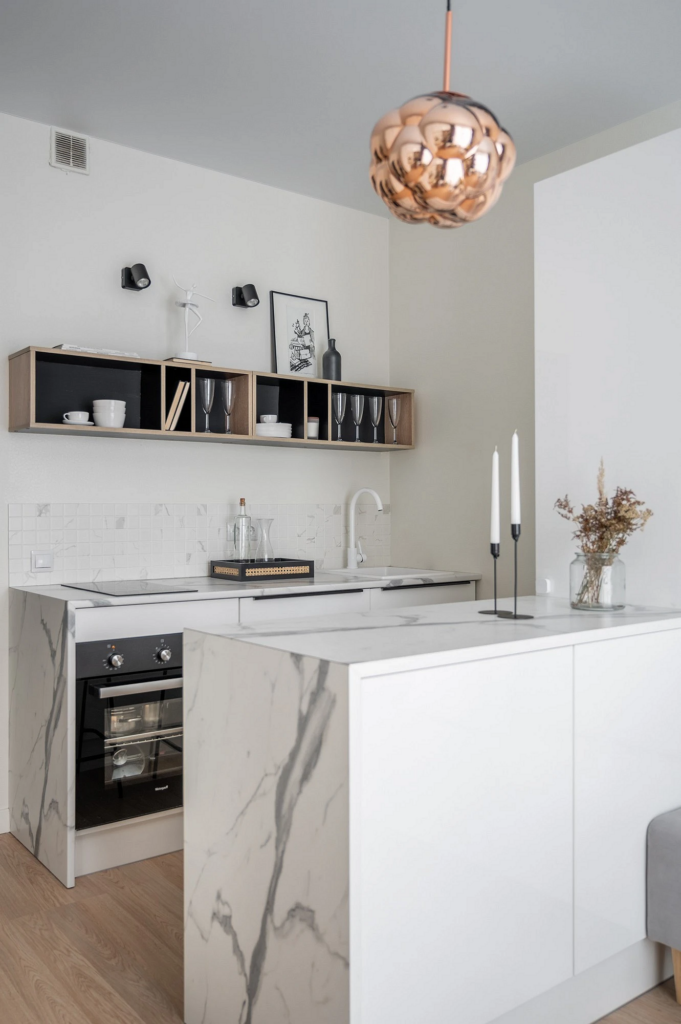
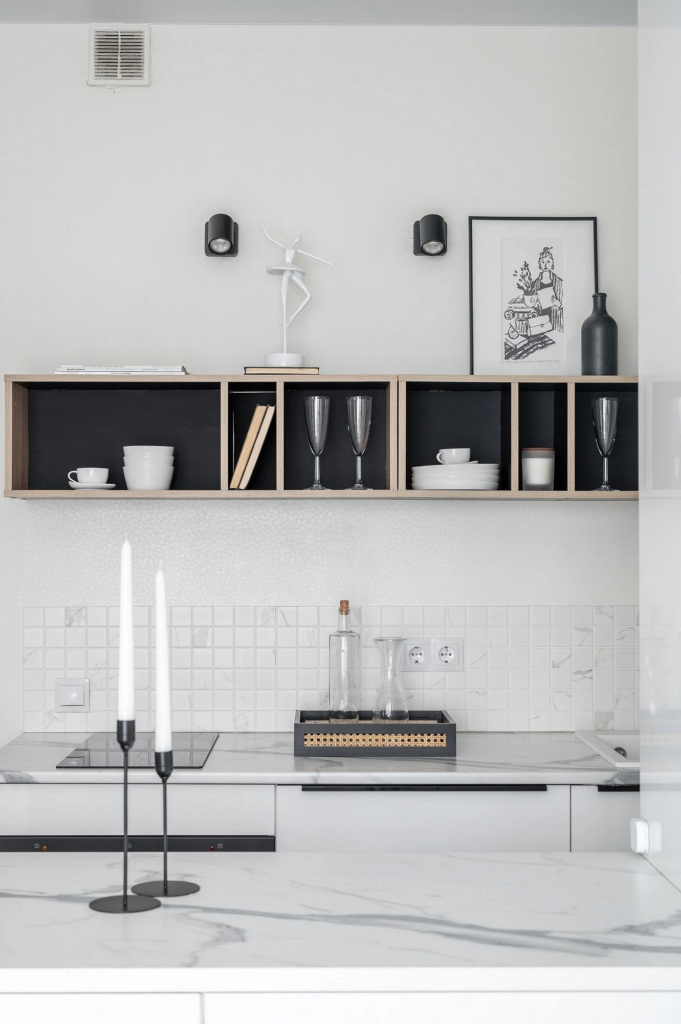
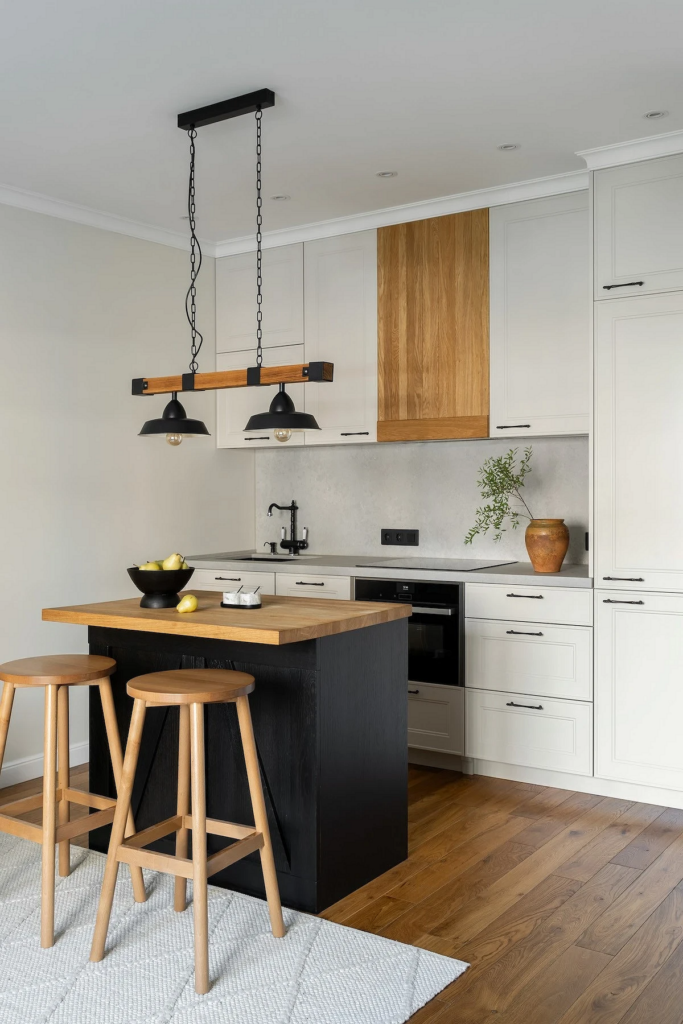
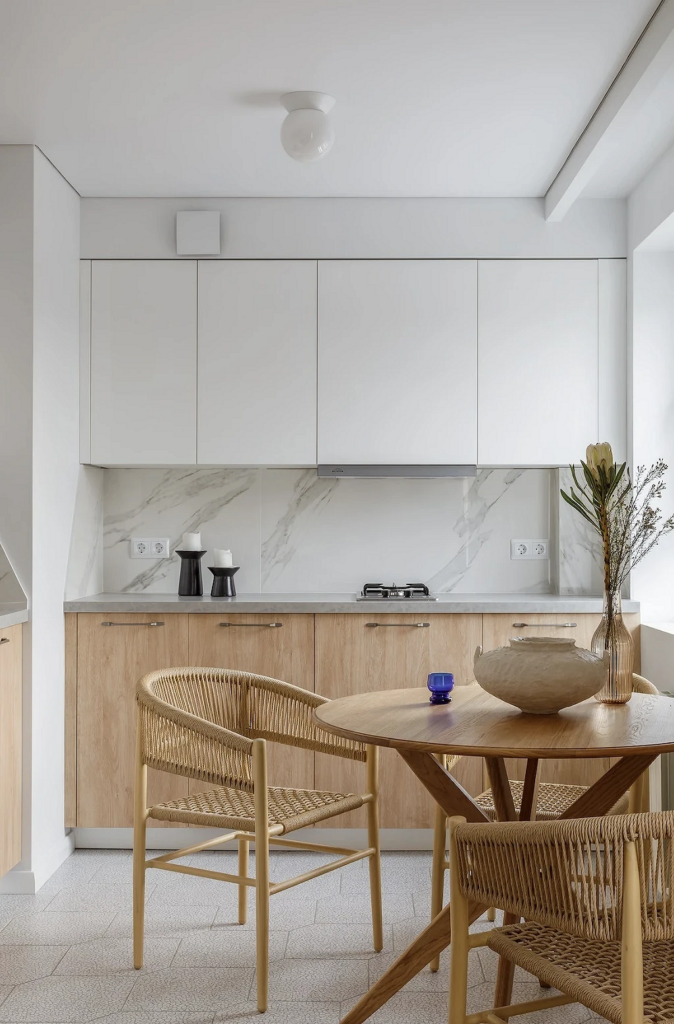
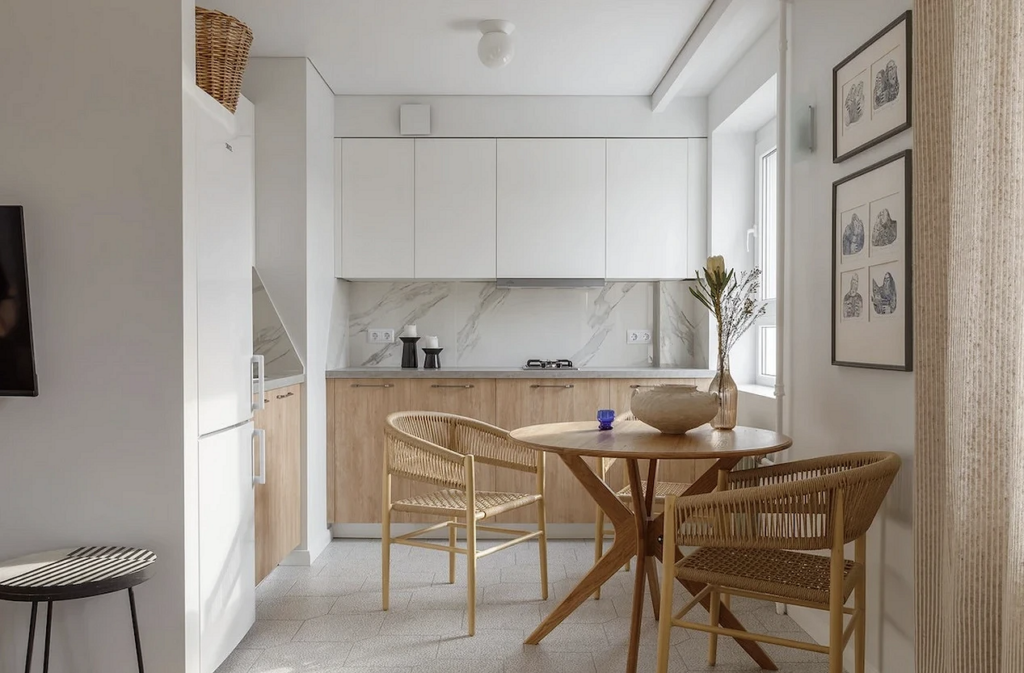

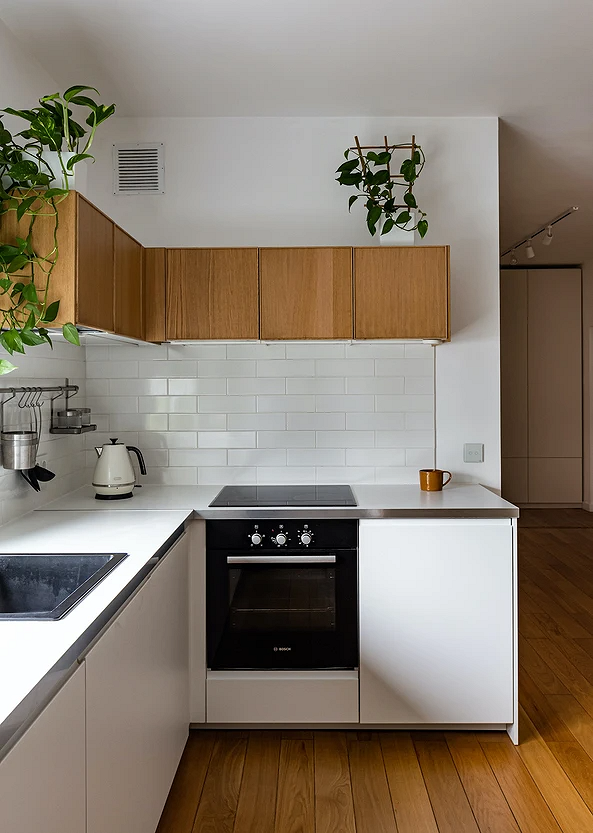
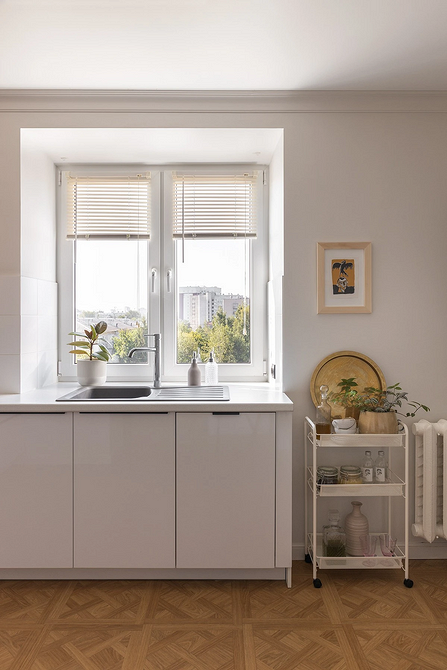
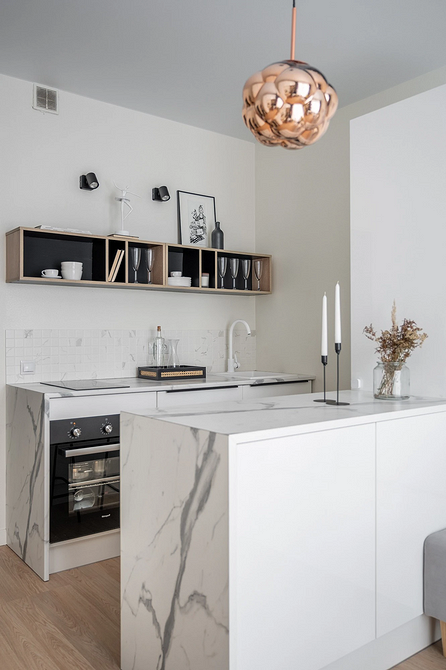
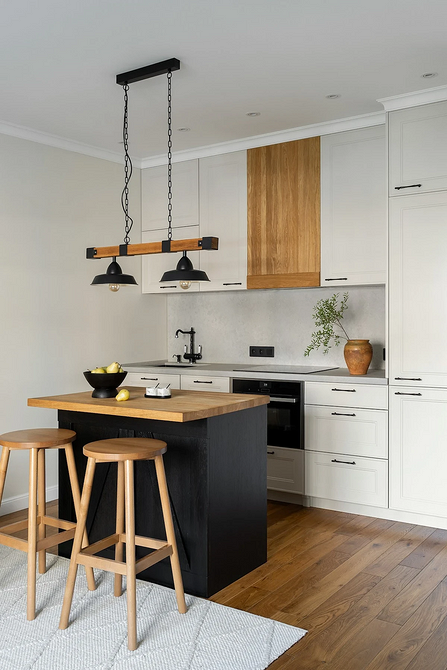

Beige
A universal option for those who are unsure about which wall color suits their kitchen.
Especially if white seems too cold and boring. Beige also has the property of expanding space, but at the same time, it creates a sense of coziness. Furniture made
of dark wood looks particularly good against such a backdrop. Another successful combination: beige items and objects made from light wood species. This option makes the setting intimate and calm.
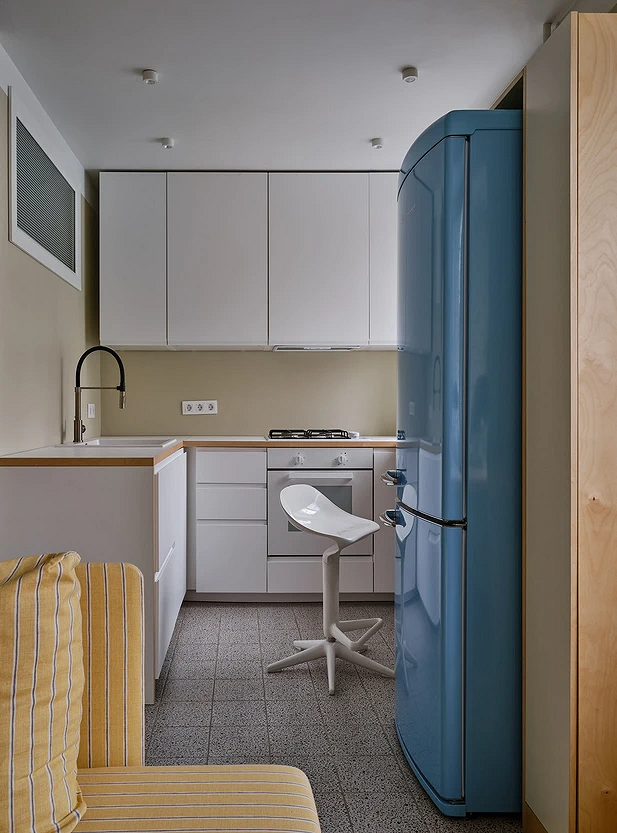
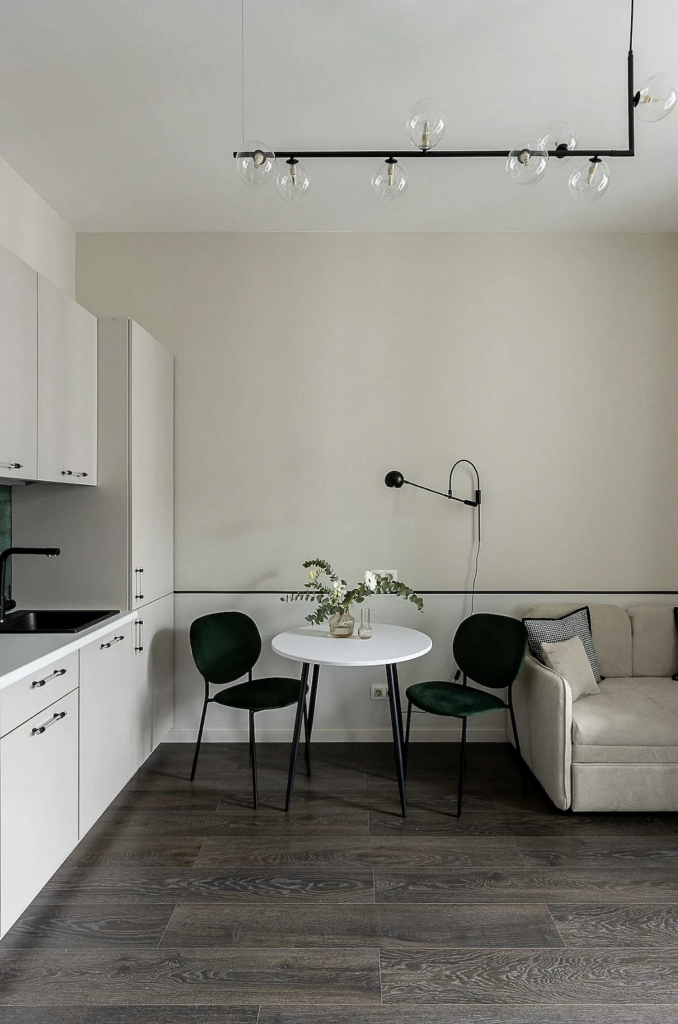



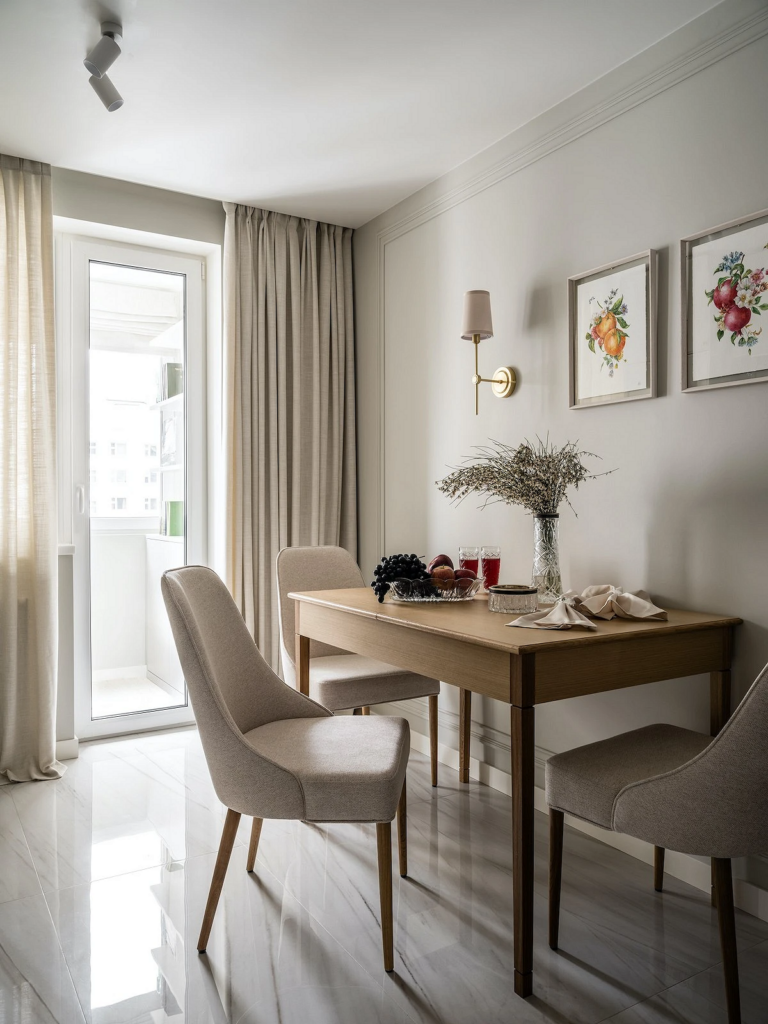
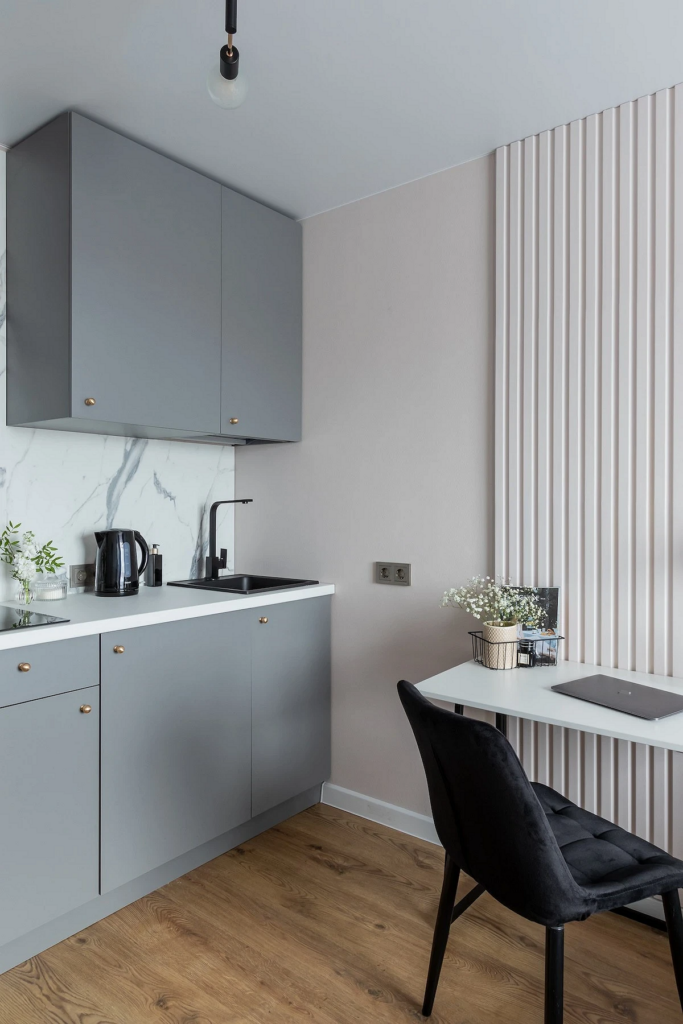
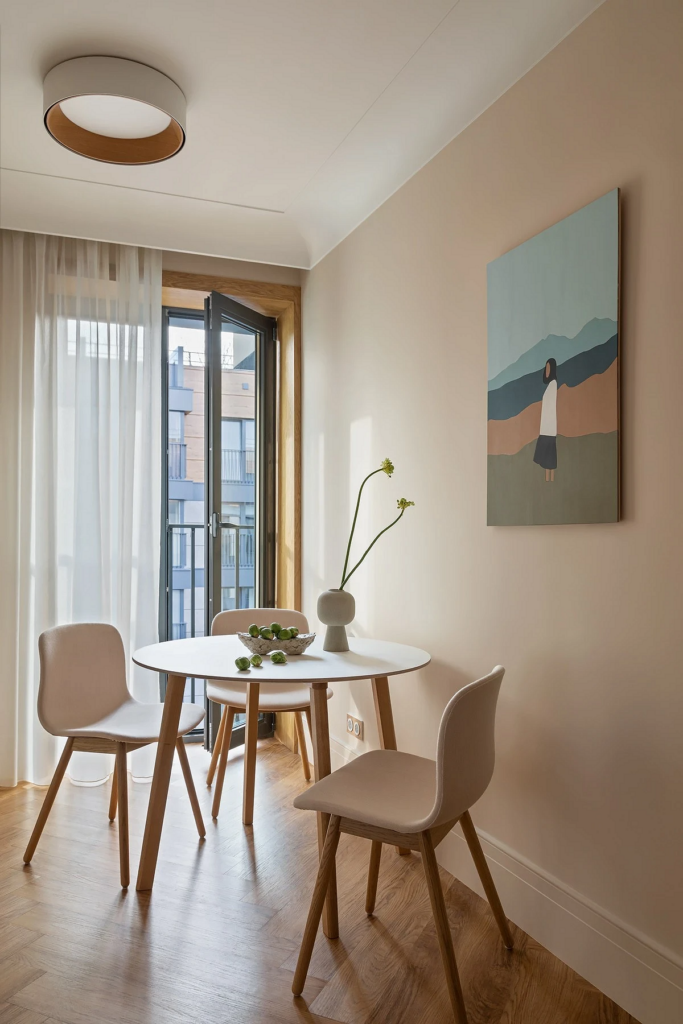

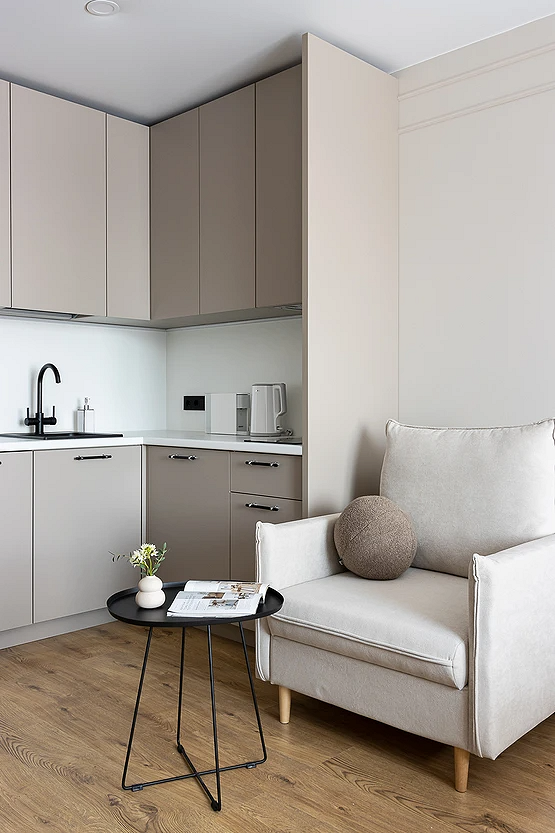
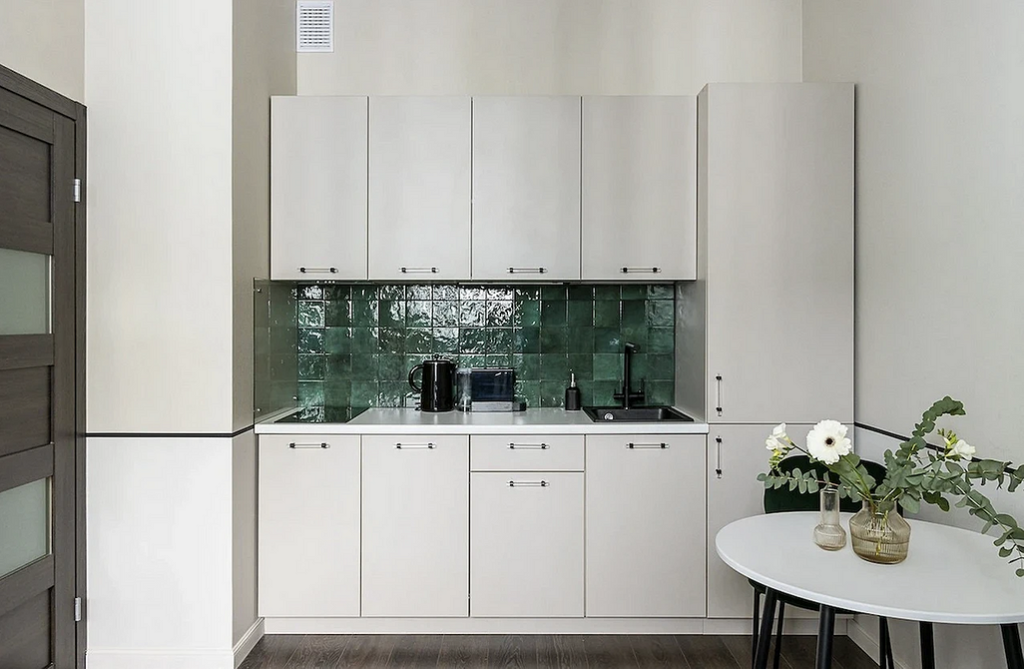
Light Gray Kitchen Wall Color
An unconventional option for those who don’t like beige or white but still want to stay within the basics.
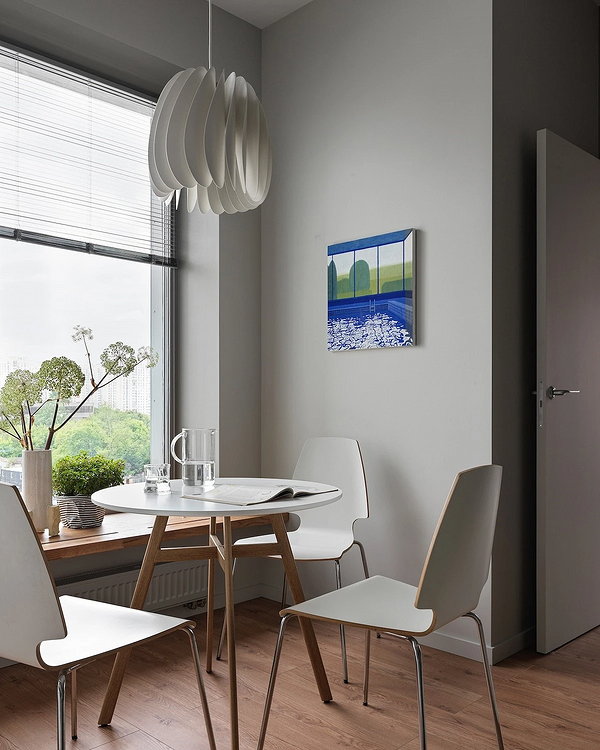
Gray in itself is quite deep and noble, it soothes and becomes a good background for bright kitchen accessories and furniture. Among the more than two hundred shades, there are dozens of light variations with warm and cool undertones – you just need to choose the right one.
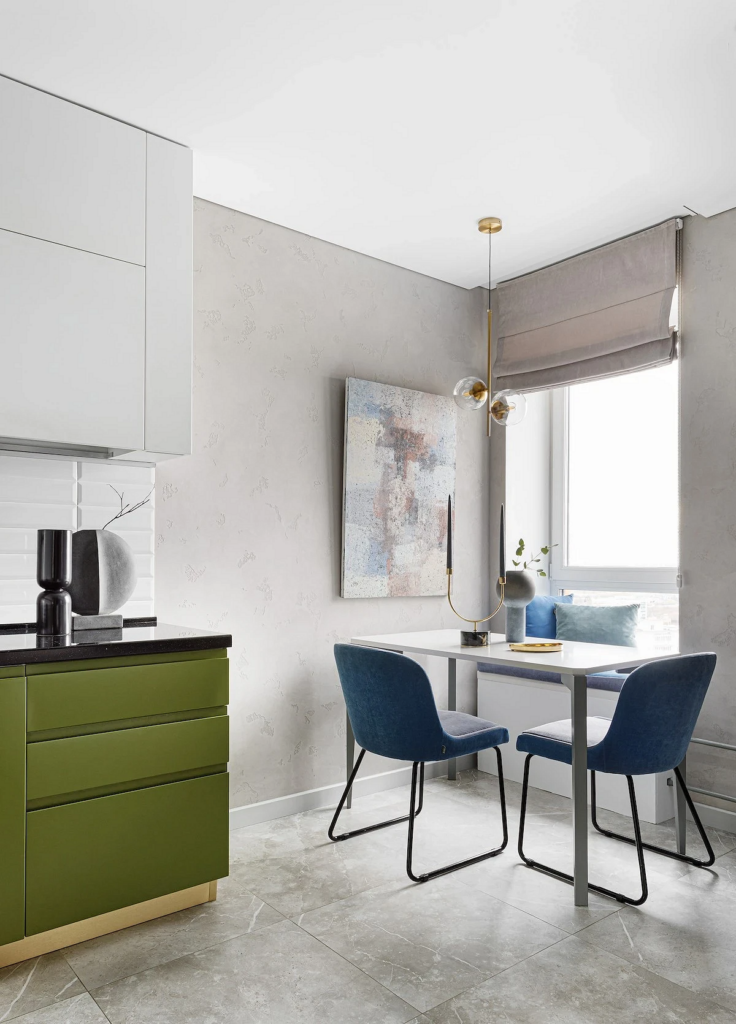

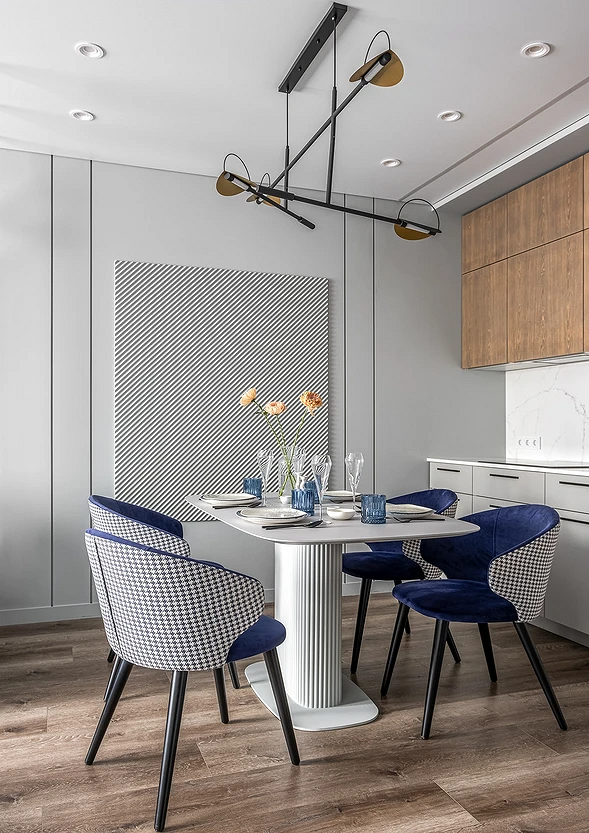
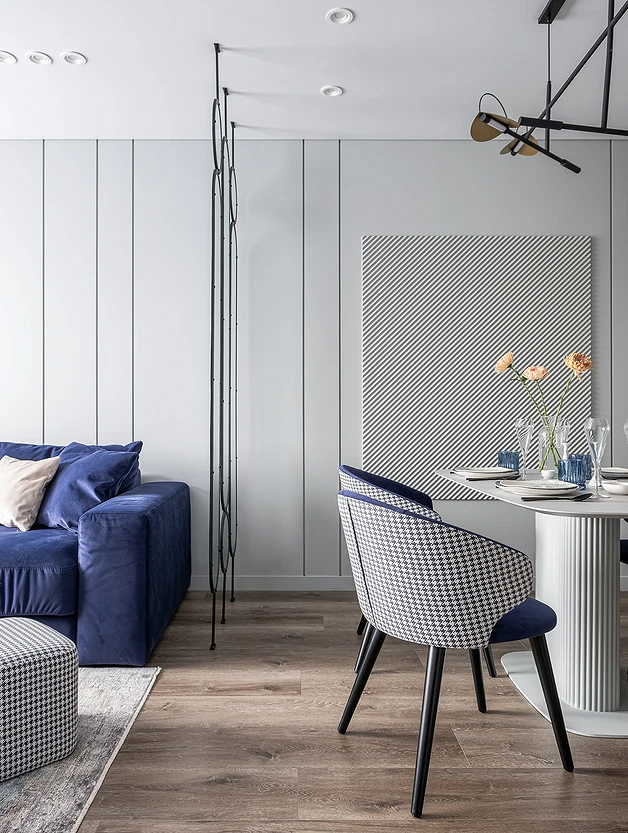

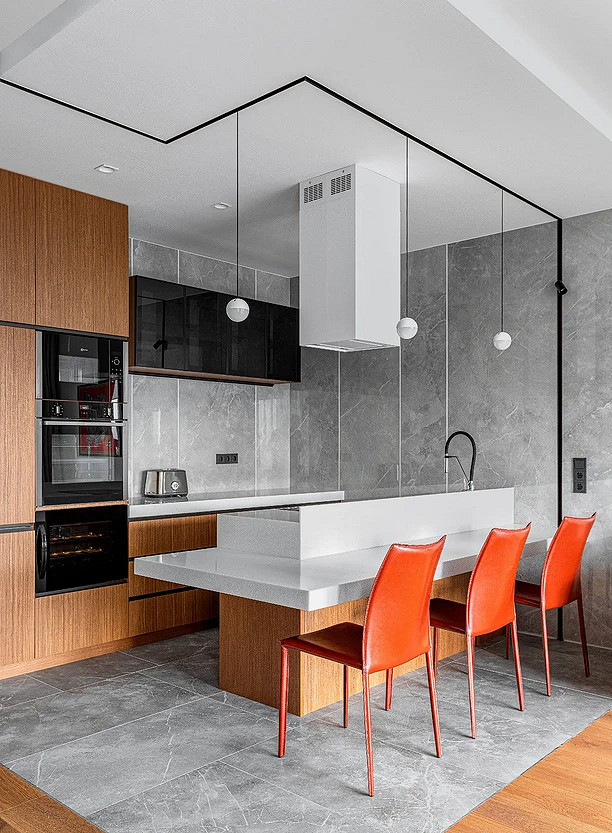


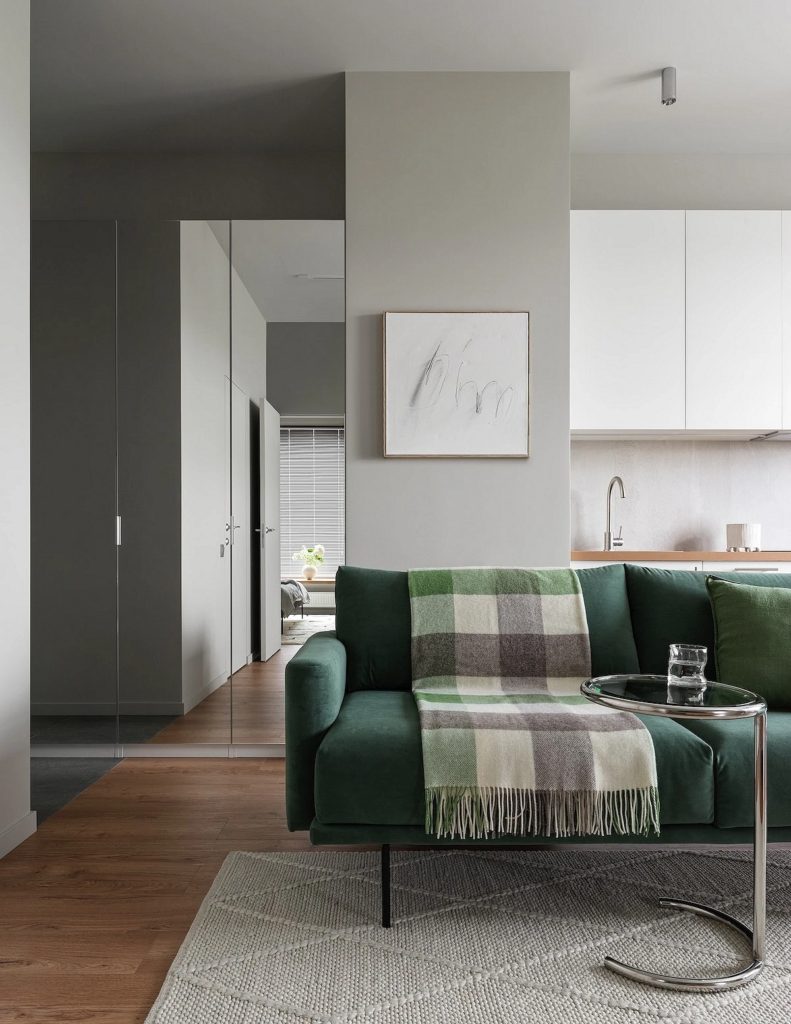
Pastel Tones
A gentle and unique solution for designing a kitchen, if basic options like beige and white have become monotonous.
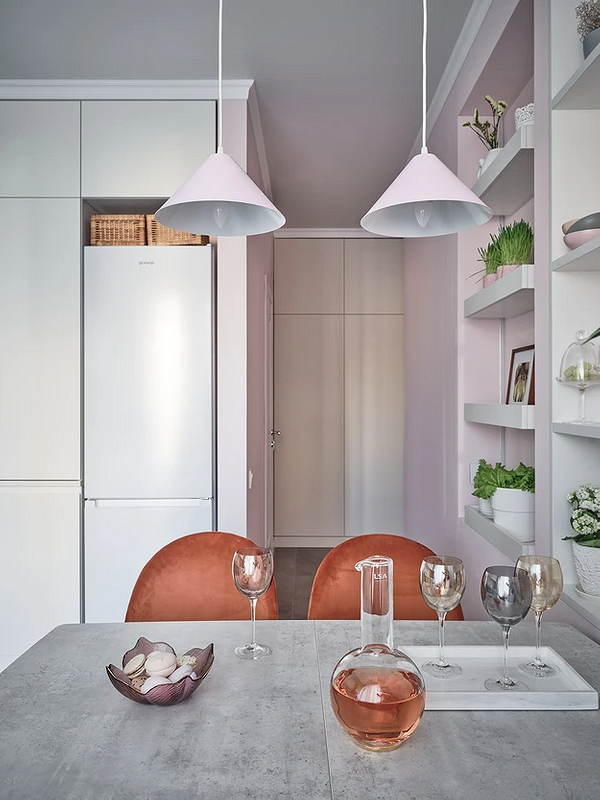
Mint, light yellow, blue, and pink wall colors create a cozy atmosphere. They can be used to highlight bright furniture or a dark floor. This finishing also combines well with furniture in the same pastel shades, creating an airy and delicate combination. You can match the kitchen set to the color of the walls. A kitchen in such a palette resembles a delicious dessert. Pastel surfaces also softly complement dark wood furniture, but it should be a statement piece and not too rough in texture.
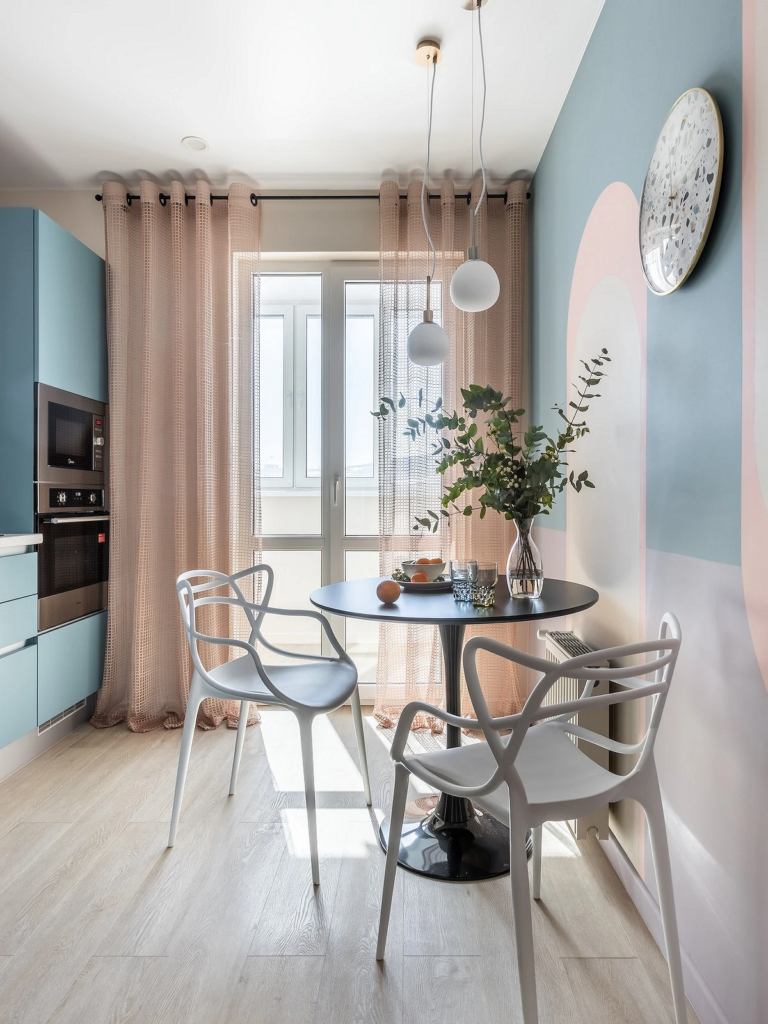
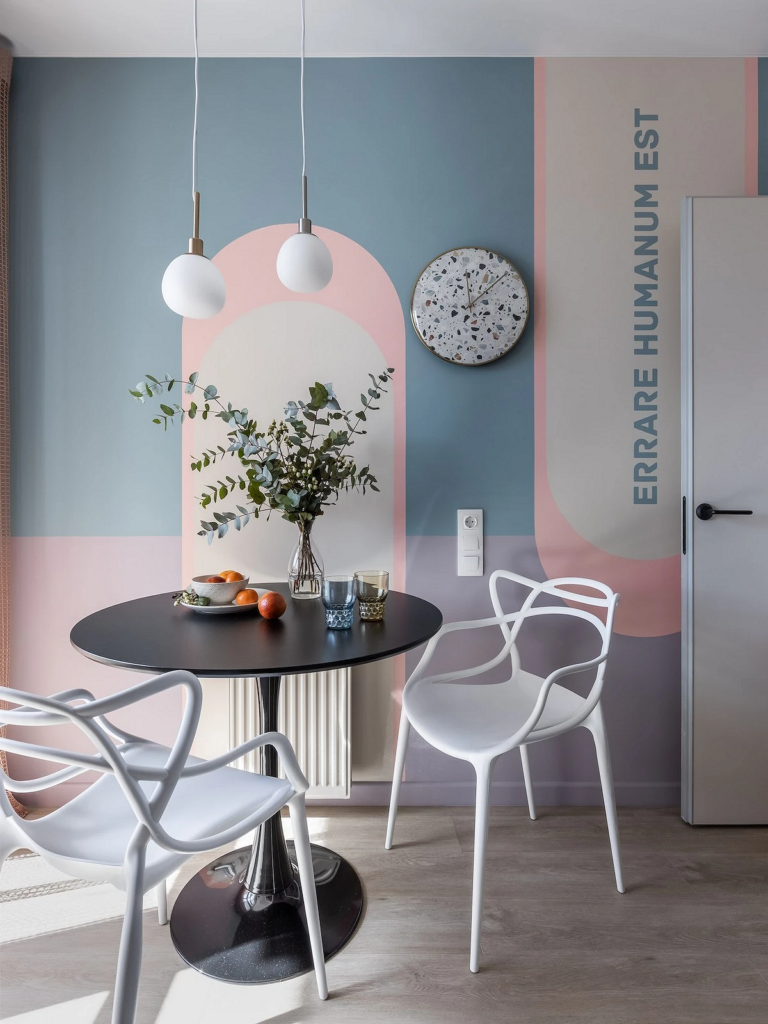
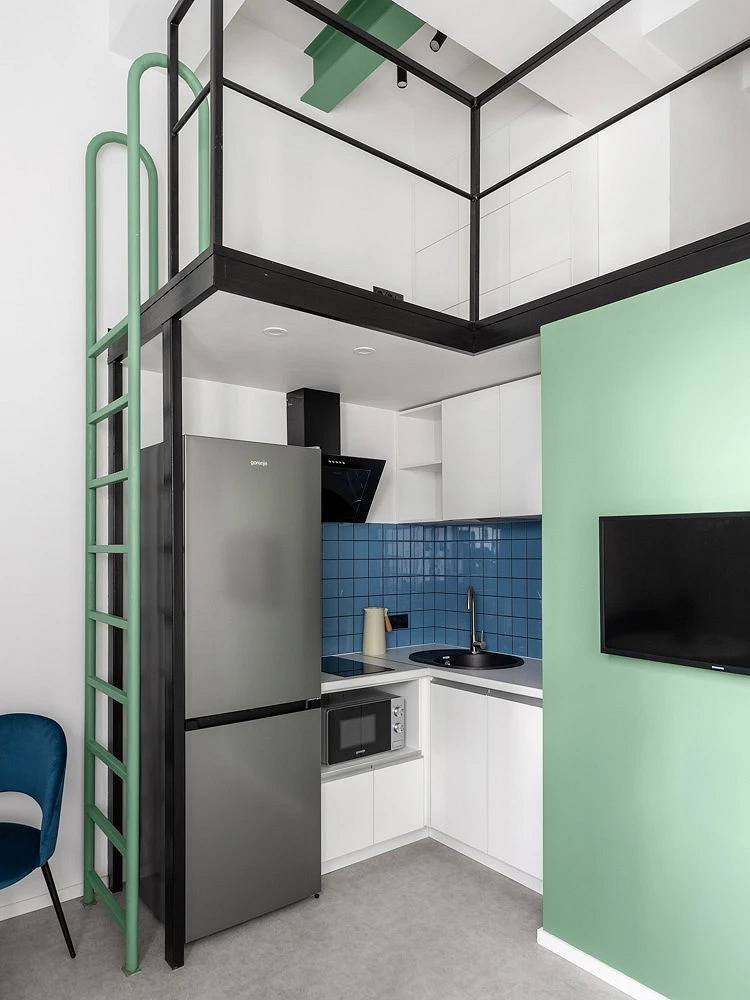
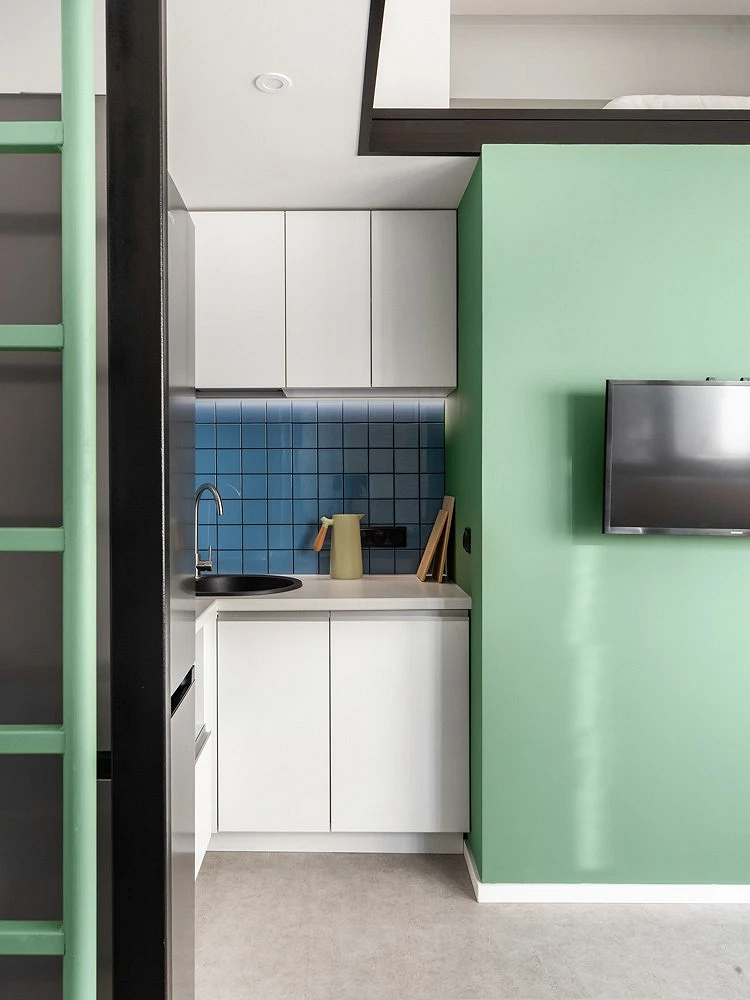
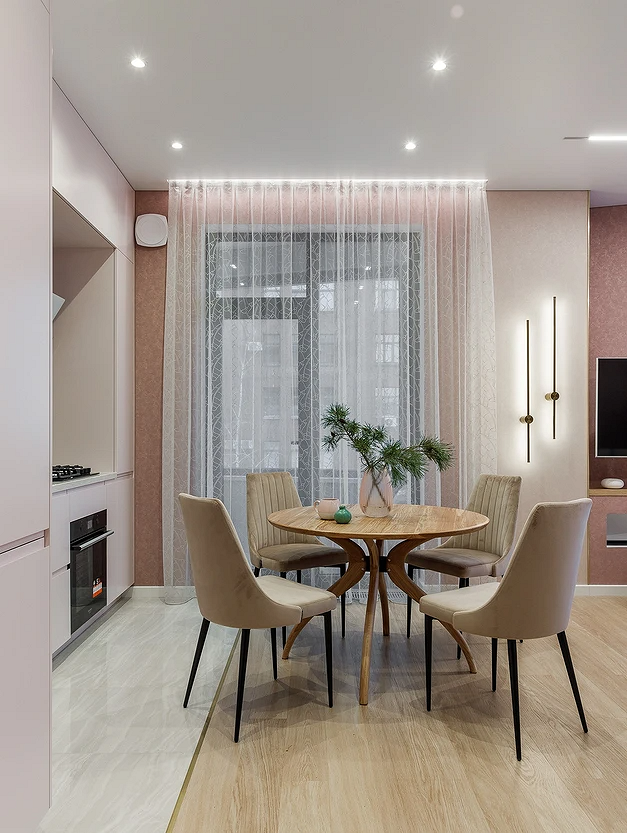
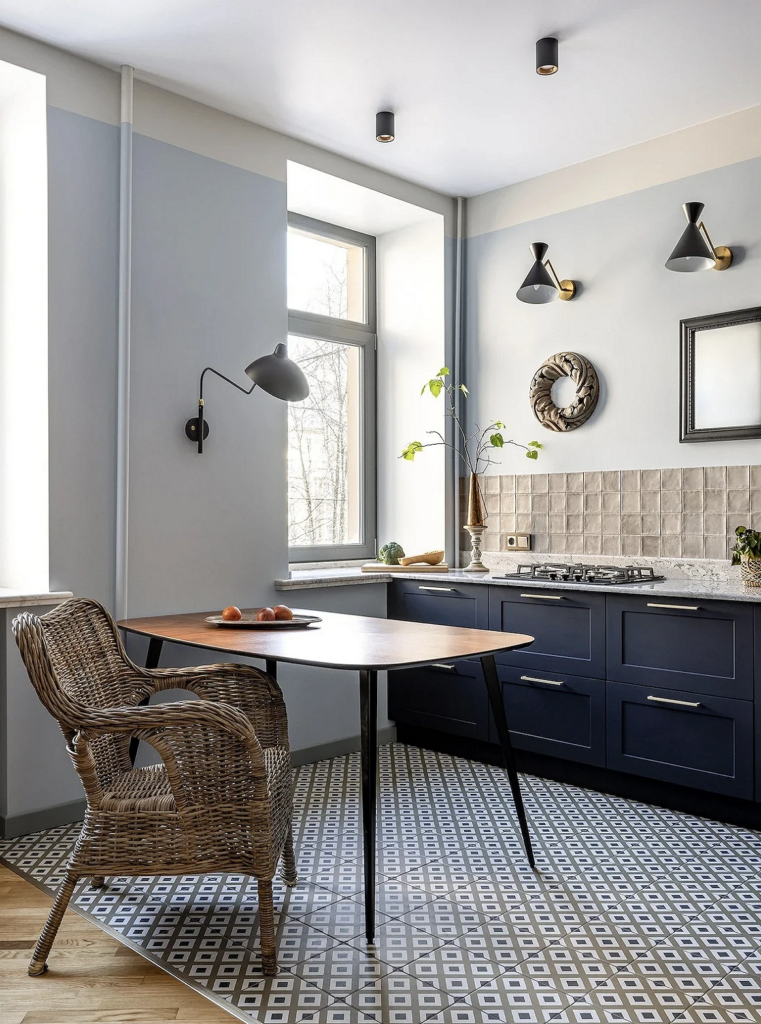
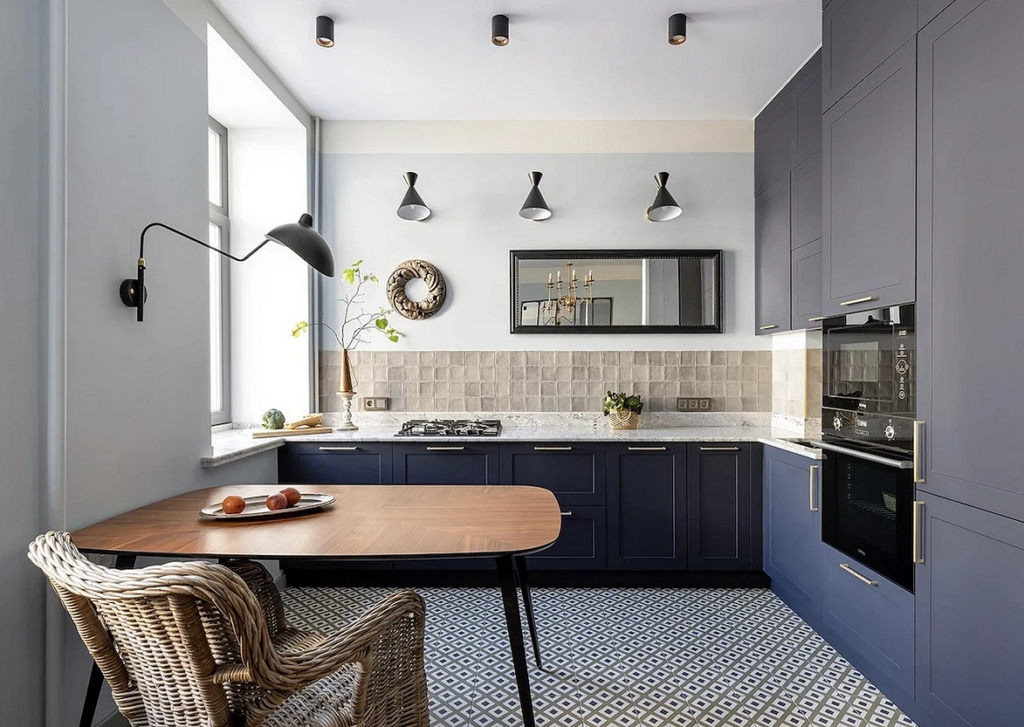
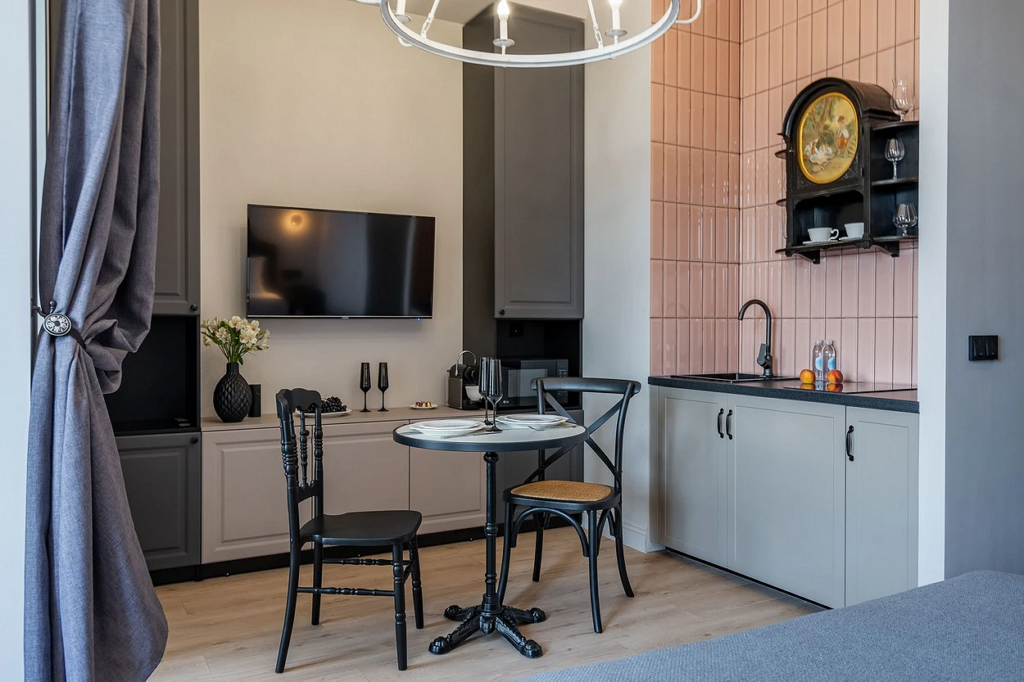
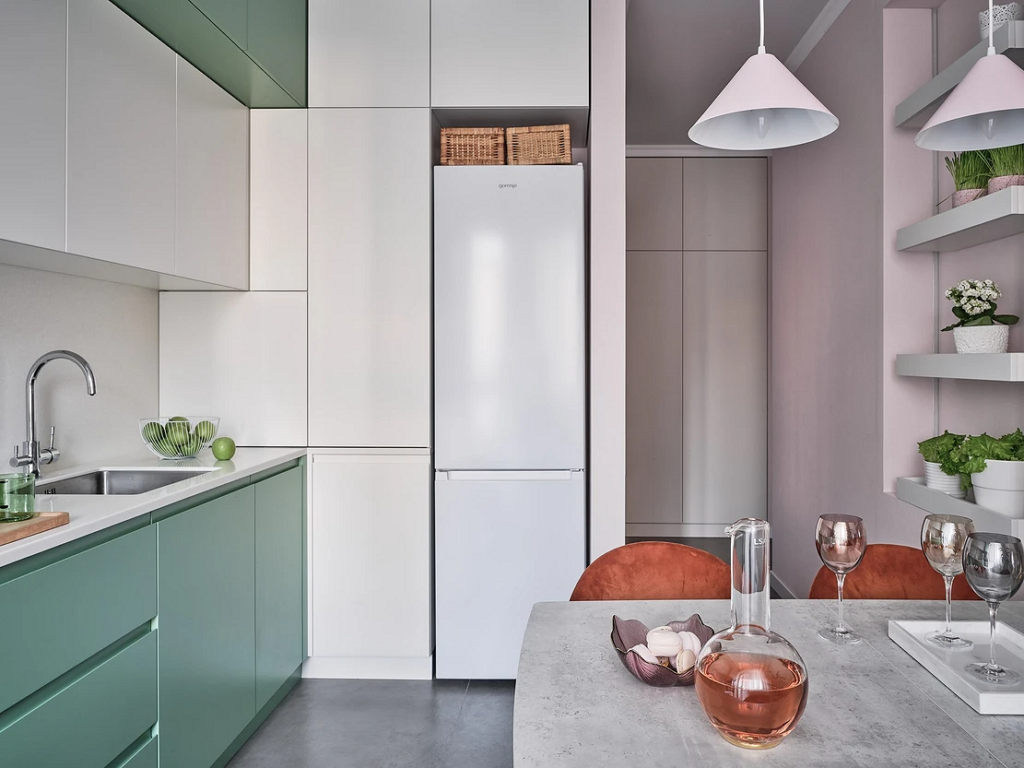
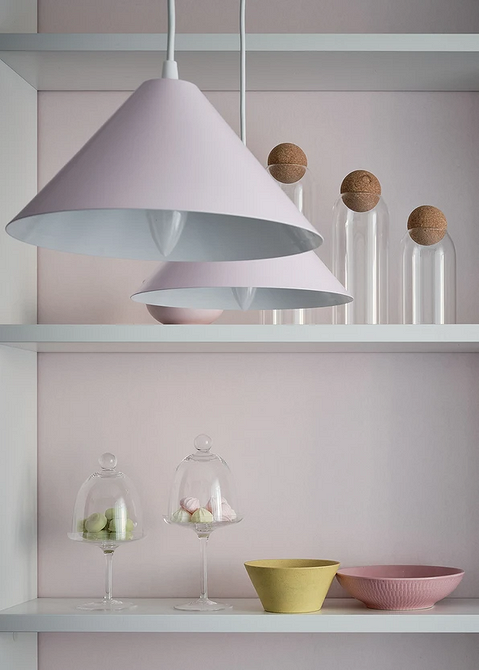
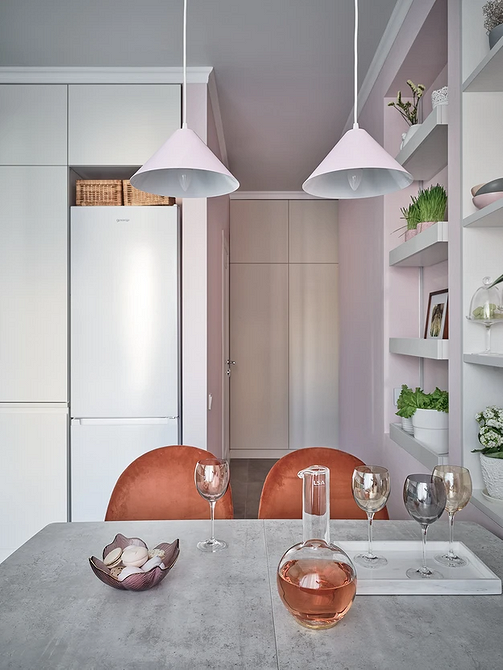
Contrast
A bold decision that should be used cautiously in interior design. It’s not recommended to decorate all walls with active colors.
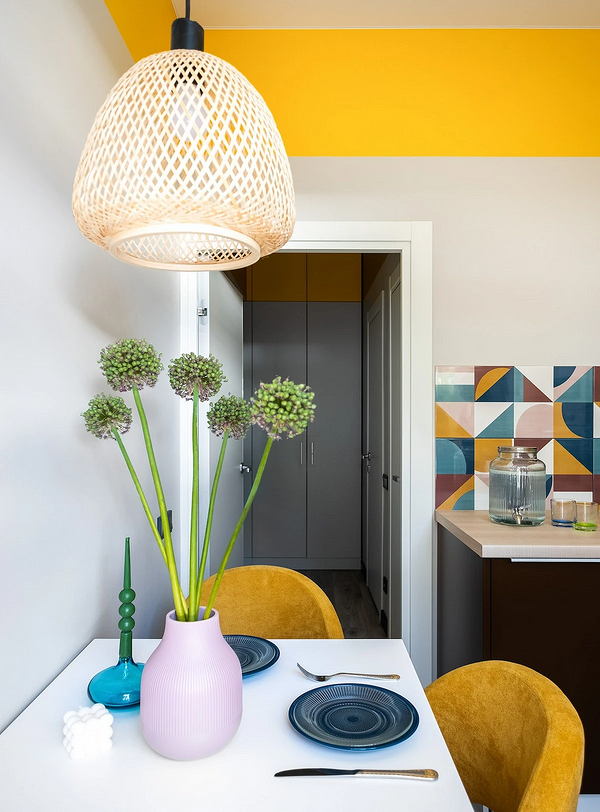
A universal option is to finish one accent wall or backsplash in a bright shade, with the remaining walls in a neutral tone. This way, the overall interior will look harmonious and balanced, without straining the eyes. Such an accent surface can also be used to zone the space: for example, to highlight a dining group or a living area if it is combined with the kitchen.
Furniture against such walls can be bright, matching in tone. This is a bold decision that requires great accuracy in selecting shades.
Also, furniture in dark colors can stand against bright paints, as it will mute the wall color. The most successful, classic combination: a bright background and white furniture. It will lighten the interior and highlight the walls.
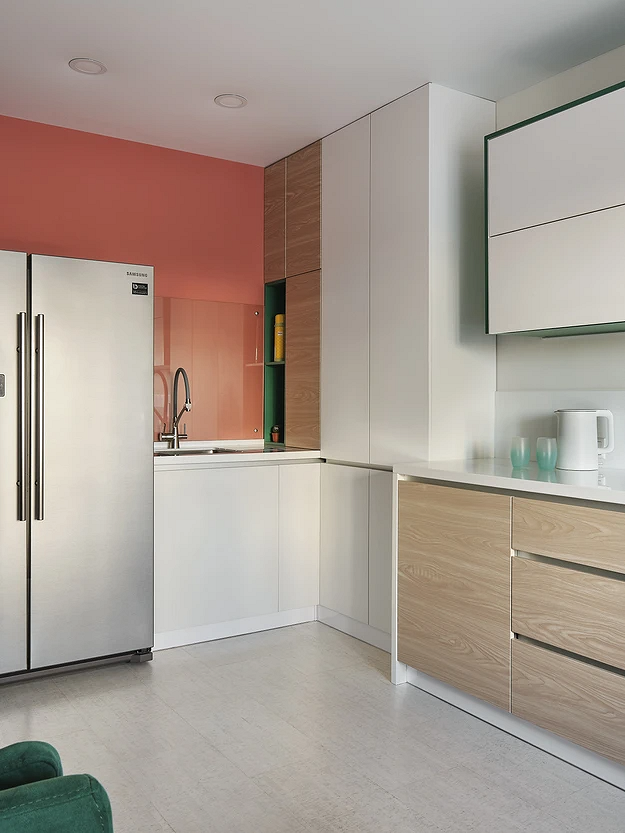
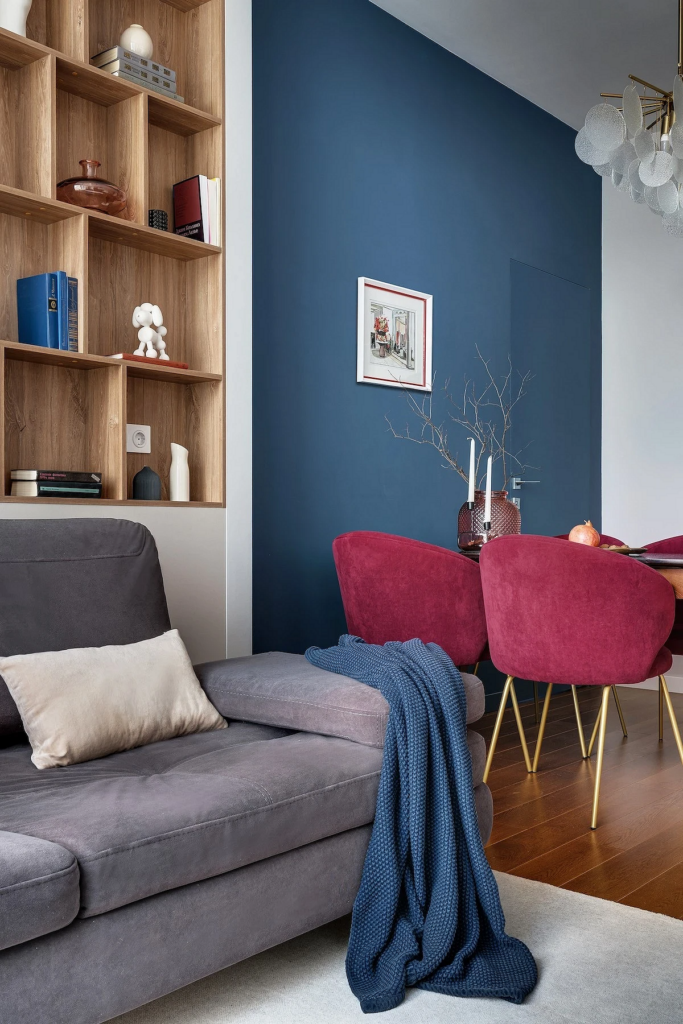
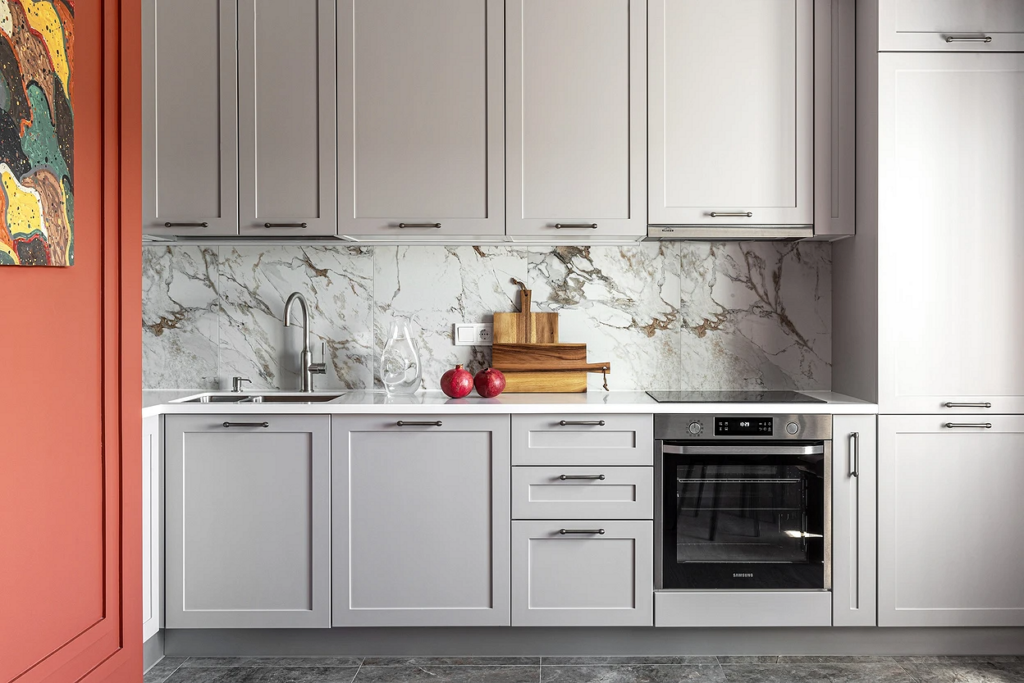
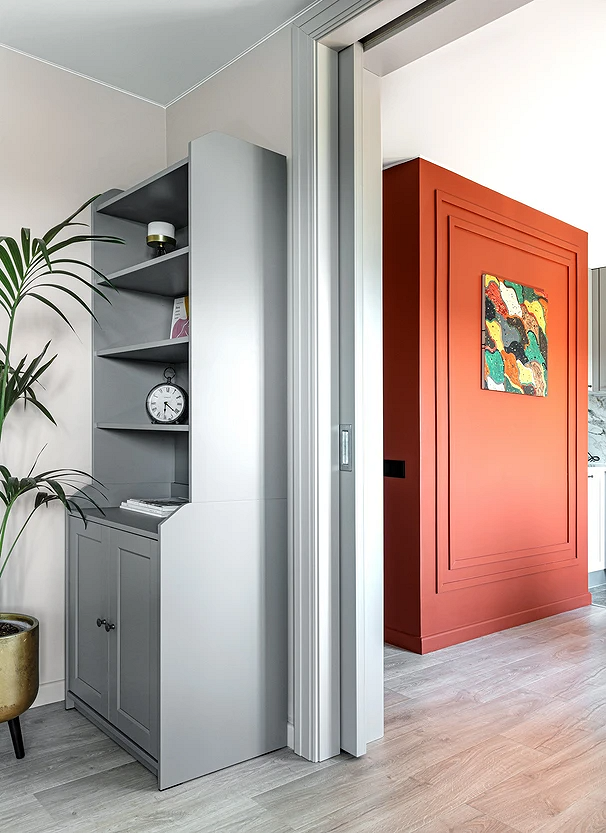
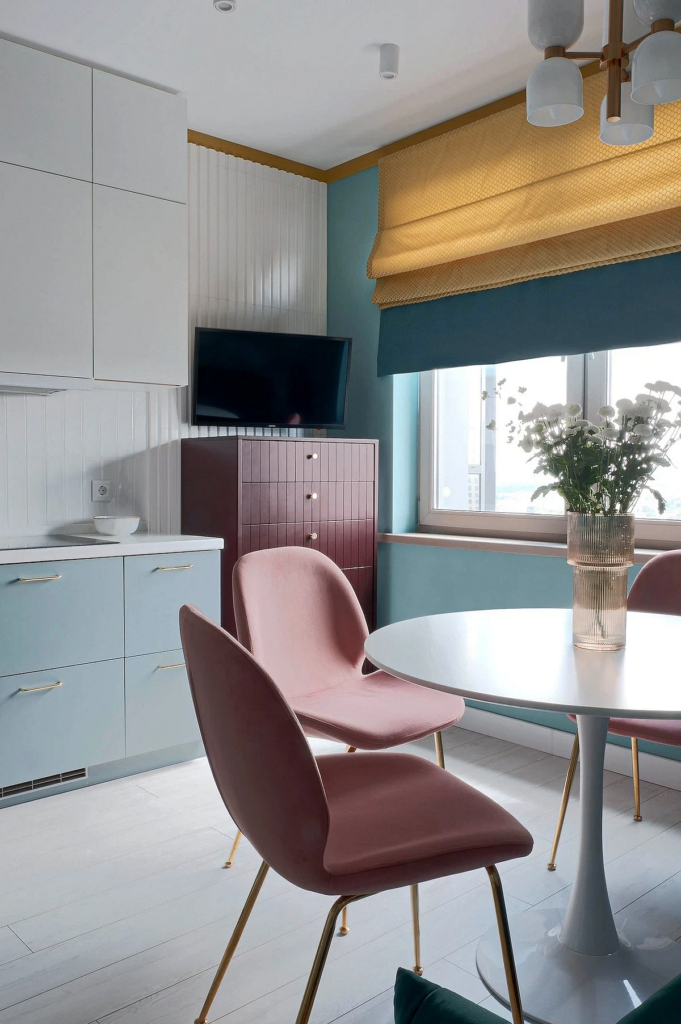

Dark Palette
When deciding on a color to paint kitchen walls, deep shades are not often chosen. However, the combination of one dark surface with light ceilings and other walls visually opens up the space. The key is to choose the right shade, keeping in mind the main lighting in the room.
Black Kitchen Walls

Black color is often used to decorate a small section of the kitchen if it’s small. It is typically combined with white, its shades, and contrasting colors.
Here are some other ways to implement dark finishing:
- If the room size and amount of natural light allow, kitchens are sometimes entirely designed in black, always diluted with light floors. The ceiling in this case can be in tone with the walls.
- When choosing furniture, consider light-colored kitchen sets and countertops. A black-and-white option always looks stylish.
- Surprisingly, dark or even black furniture can also look good next to black walls. But it’s important to have bright light accents and good lighting in the interior.
- Another unusual solution is pastel-colored furniture against a black background. In this case, the walls will give the interior depth and richness, while the furniture will make it more playful. With such a combination, it’s better to have light ceilings and floors.

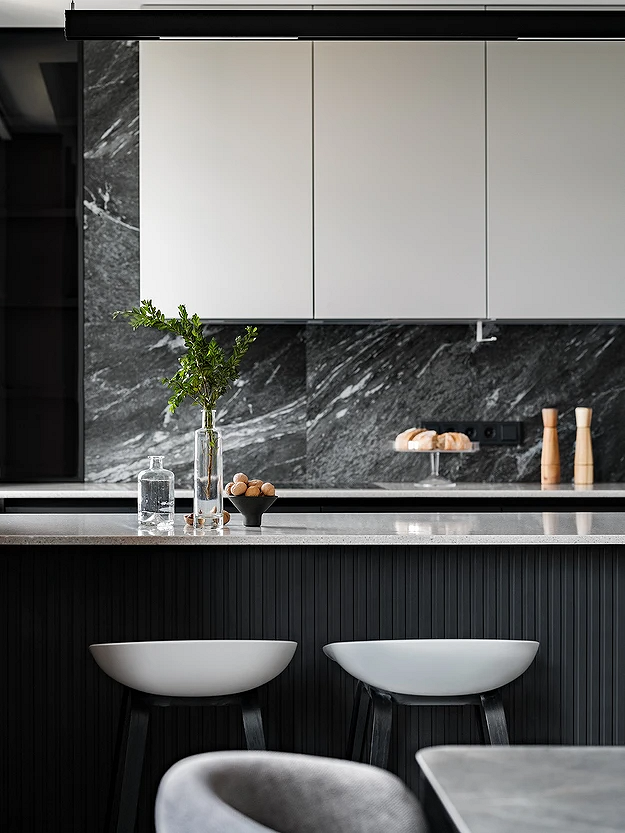

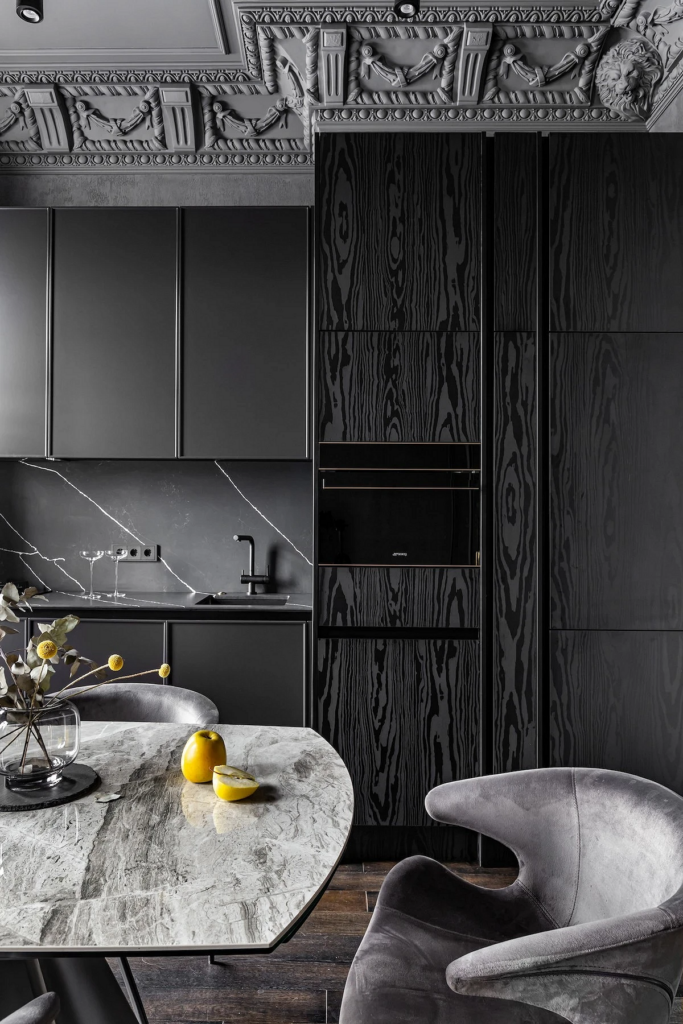
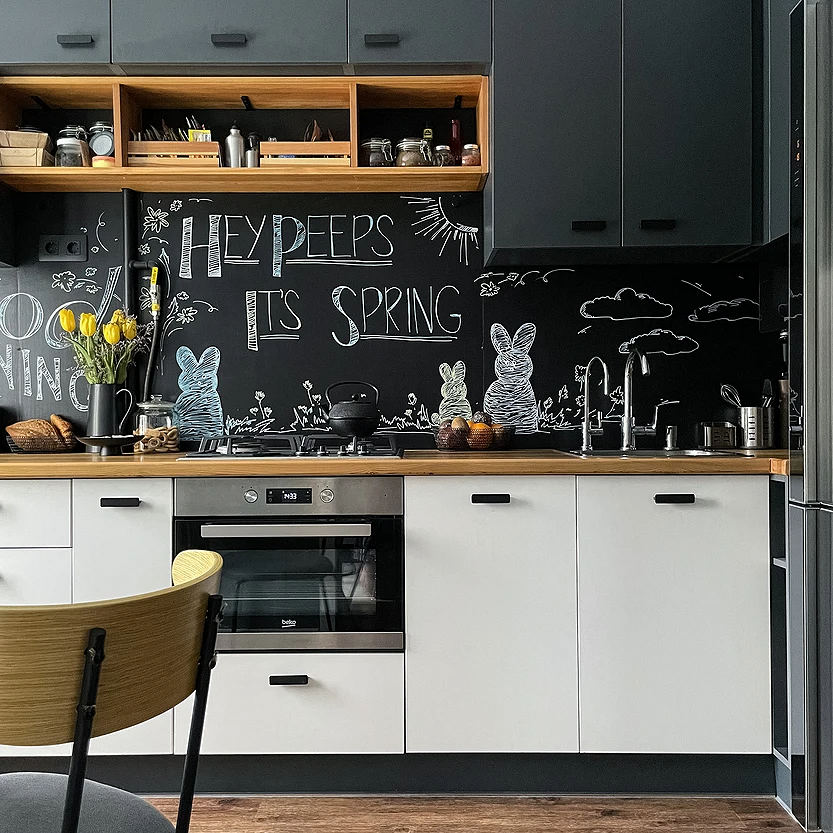
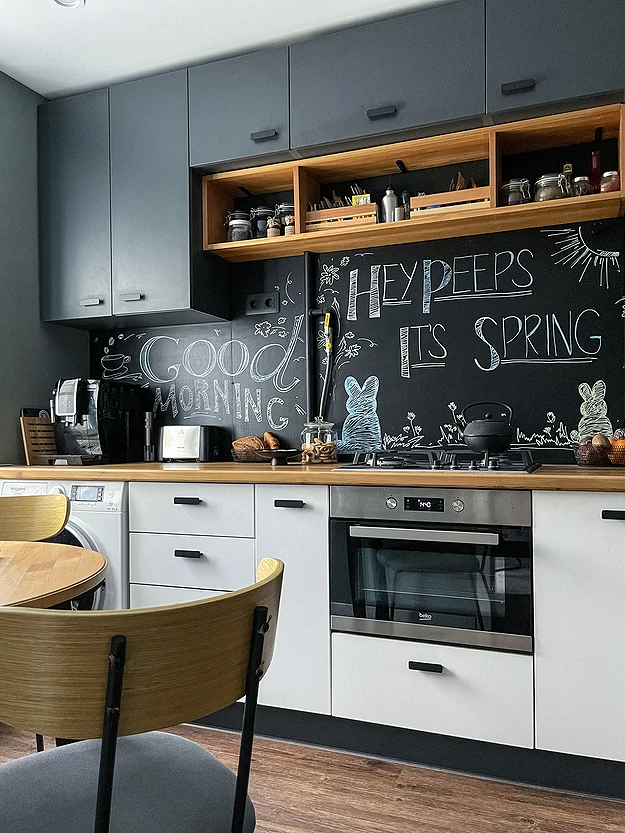
Brown Kitchen Walls
Brown is an excellent base color that doesn’t look too bold due to its warmth.
Even its cool and very dark shades like wenge and dark chocolate are pleasing to the eye; they are simultaneously noble, prestigious, and cozy to the right extent.
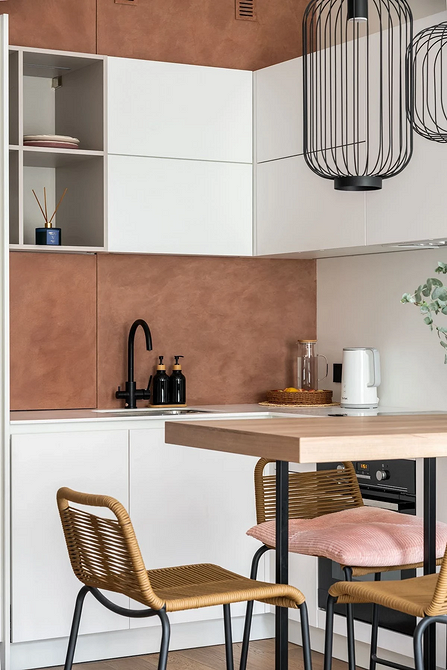
Of course, such rich variations are more often used for kitchen sets or dining groups rather than the main finish, but they can be included in the wall design accentually: for example, by finishing a section with wood-like wall panels or choosing a corresponding tile for the backsplash. In this case, choose a kitchen color that complements the walls so that the furniture and covering do not merge, otherwise, it will create an overly gloomy space without airiness. Because of this, even a spacious room can seem cramped, low, and oppressive.
Other Dark Tones
Dark gray, blue, and green are easier to incorporate into the interior than black. They can also be softened with light furniture, flooring, or ceilings.

When forming such a palette, it’s important to remember that these are not achromatic colors, and each shade has its color temperature. Therefore, ensure that warm and cool colors do not clash in the overall picture. Also, consider the texture: matte surfaces look warmer and more natural, while glossy ones appear more formal, but not as inviting. They definitely need to be balanced with wood and neutral shades like coffee or ivory. Below are examples of how such kitchen wall colors look.
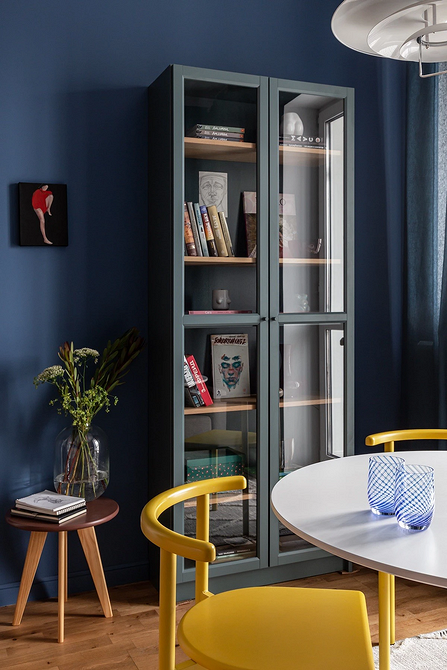
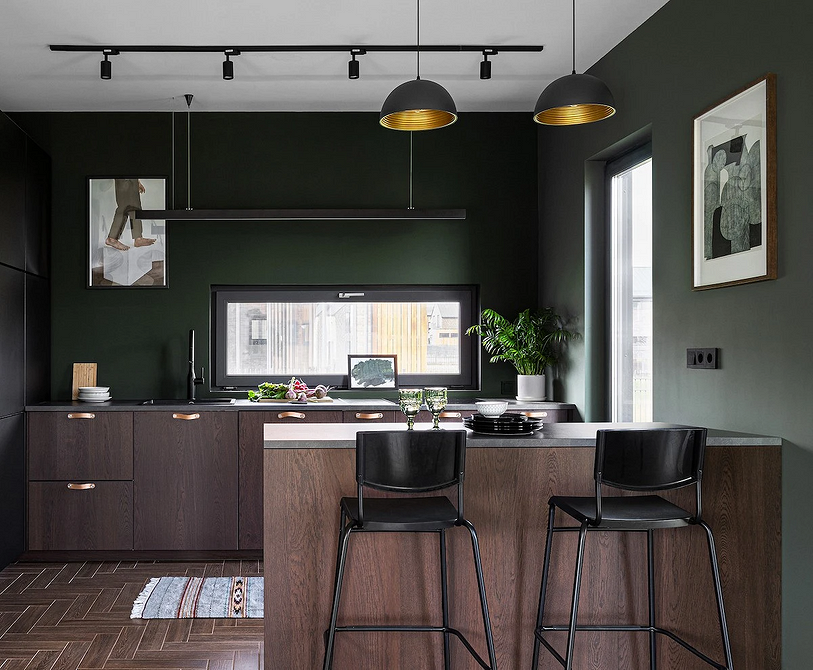

Bright Kitchen Wall Color Combinations
Finally, in the kitchen, you can afford to experiment and make it vibrant.
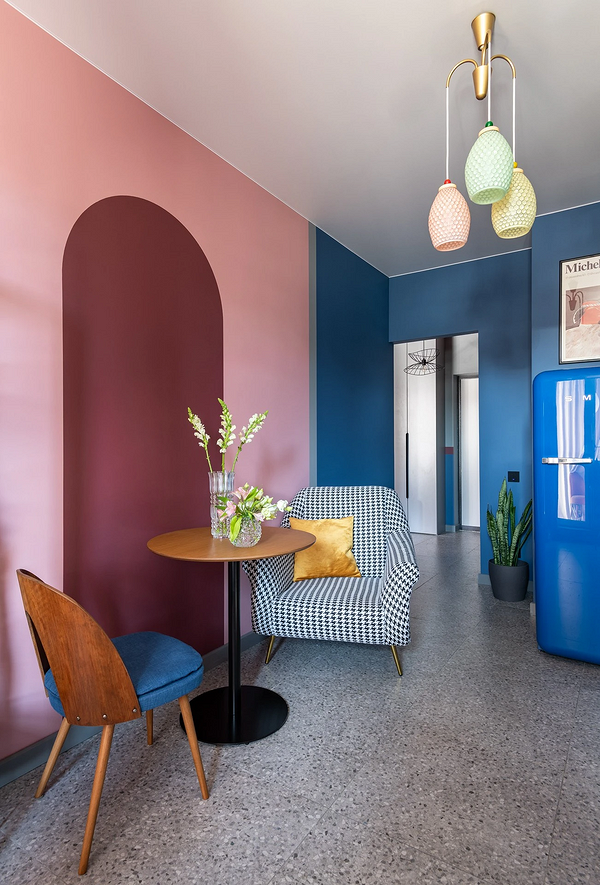
After all, you don’t sleep or typically work here, so the palette can be chosen to not induce relaxation or concentration but simply to please the eye. Pay attention to juicy, edible shades: berry, plum, curry, orange, olive, peach, pomegranate, etc. These colors are ideal for painting kitchen walls.
If you make all the walls bright, balance them with simple light floors and ceilings, and maximally minimalist furniture. Also, minimize the presence of patterns in the kitchen or choose non-contrasting ones to avoid visual overload. And don’t forget about the placement of visual anchors: they can be created using dark minimalist details in black or asphalt gray.


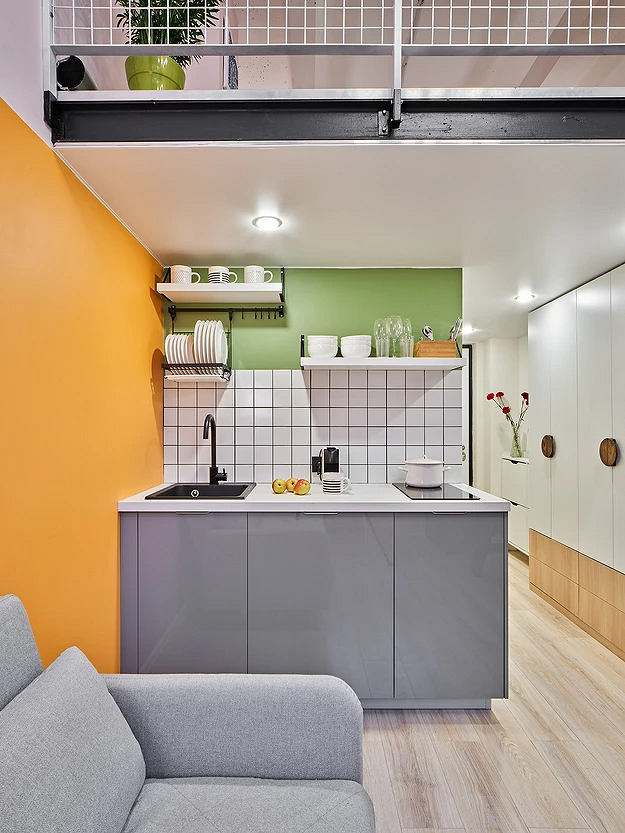

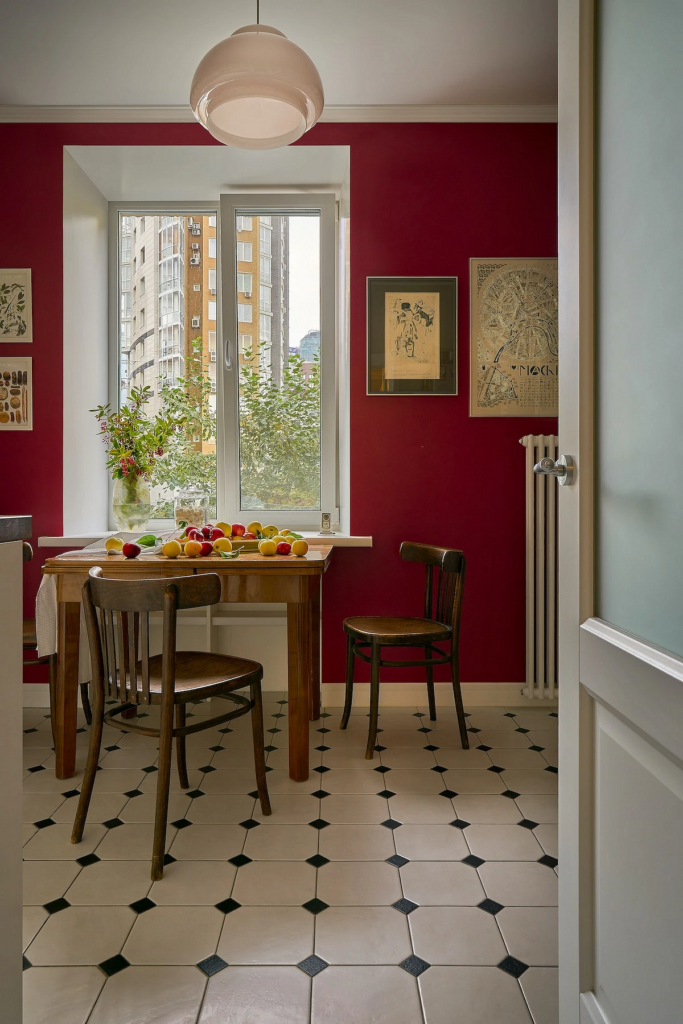
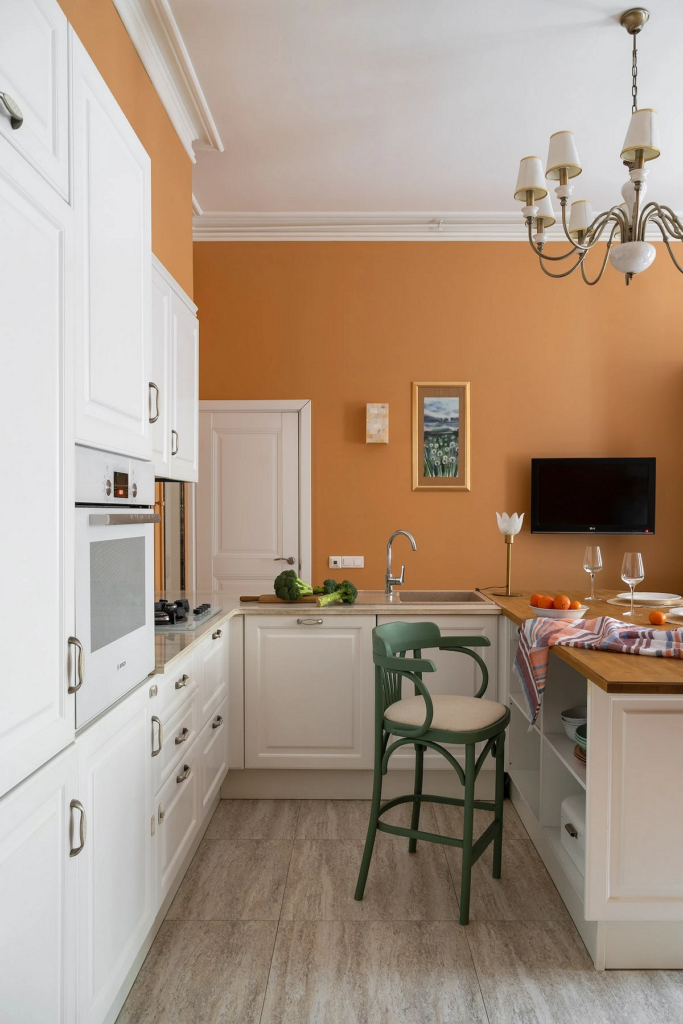
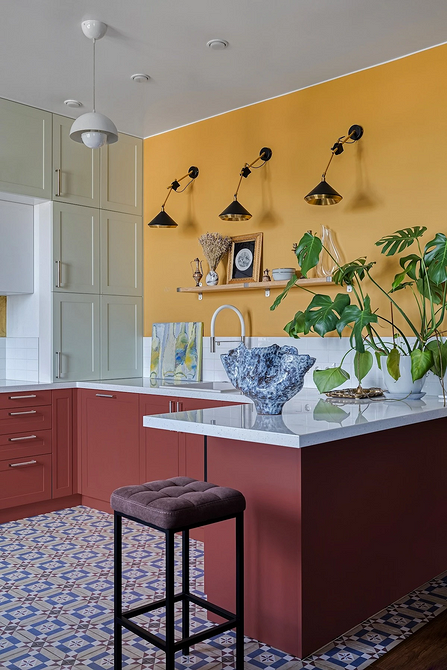

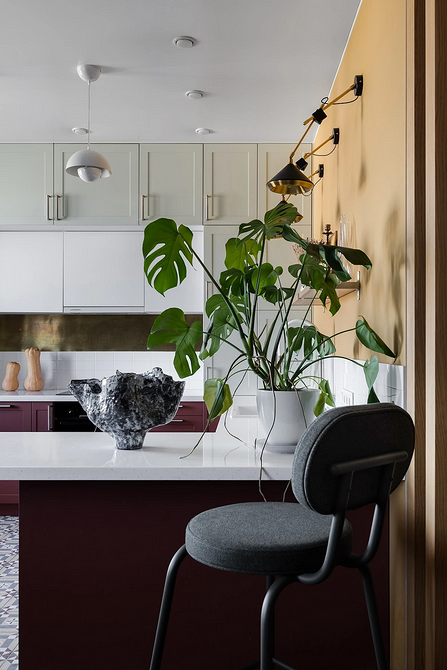
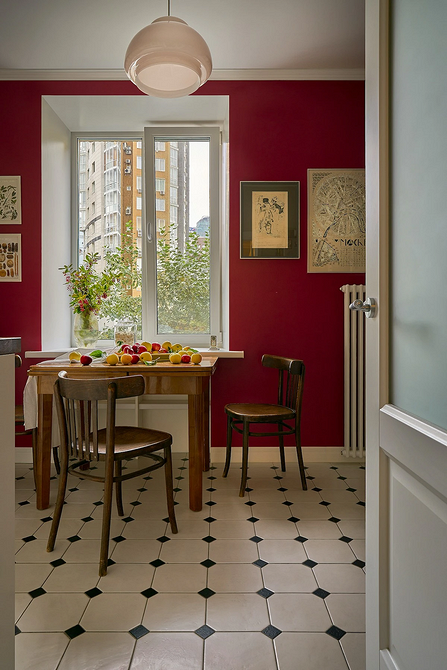
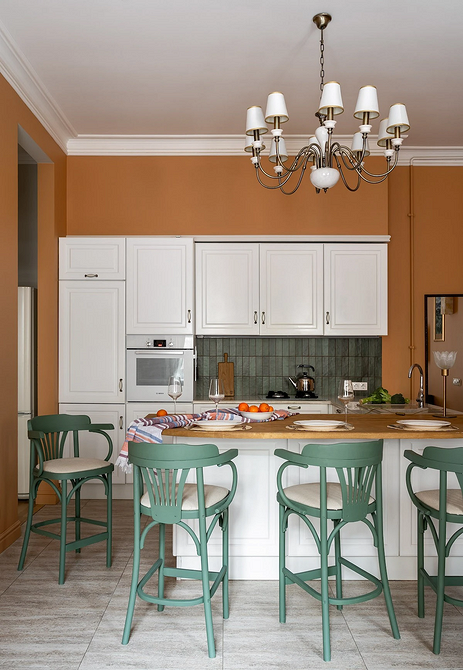
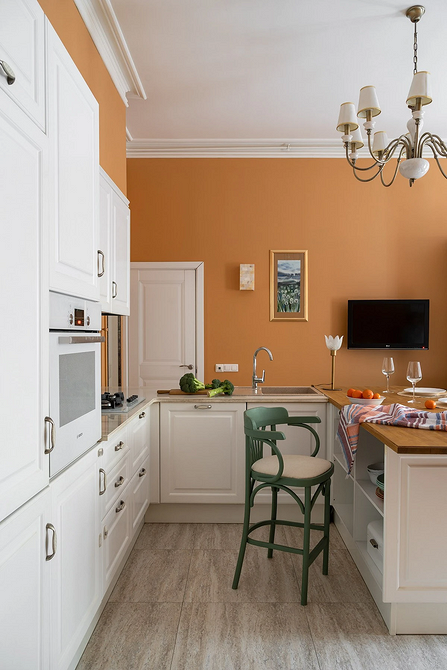
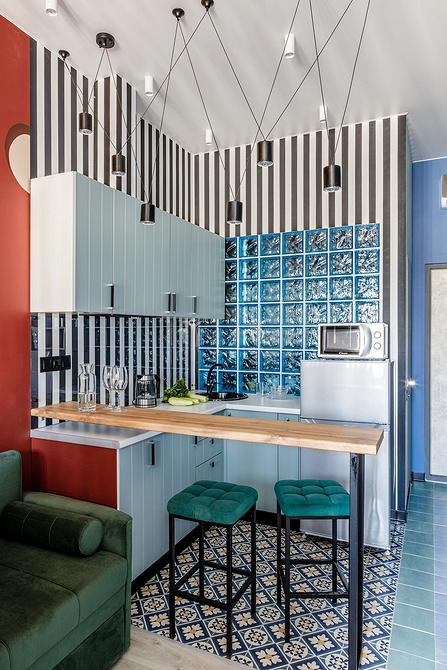

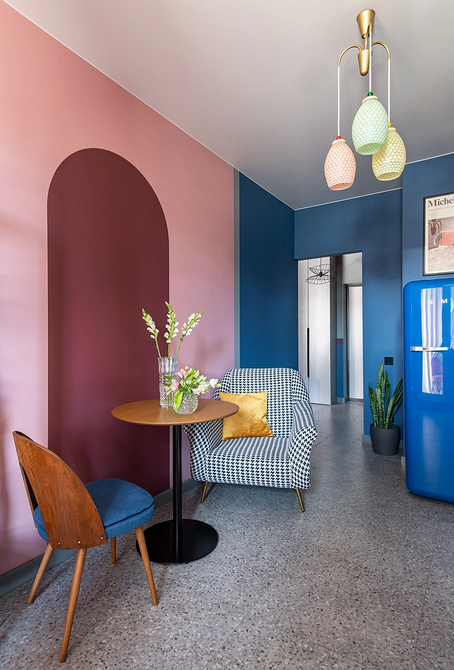
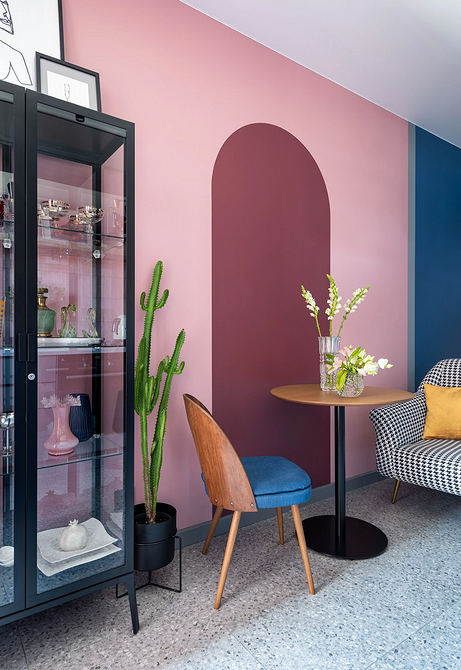

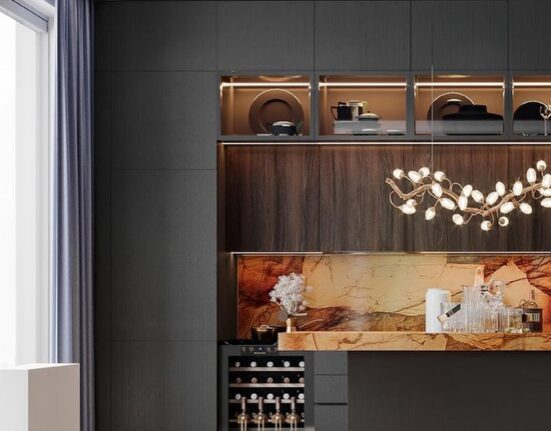
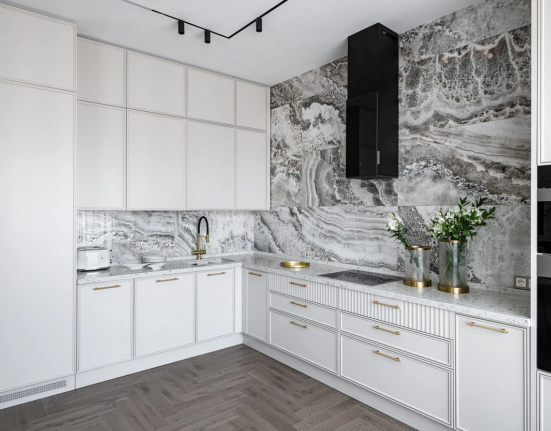
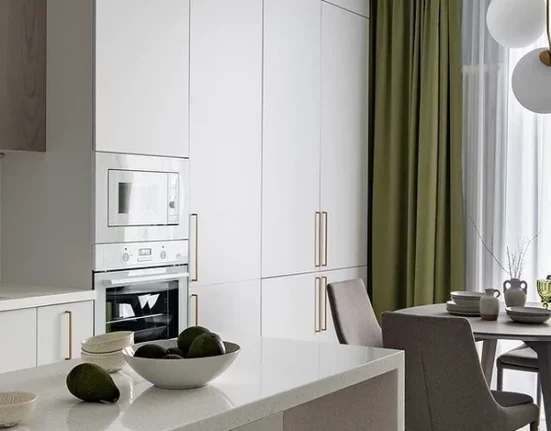
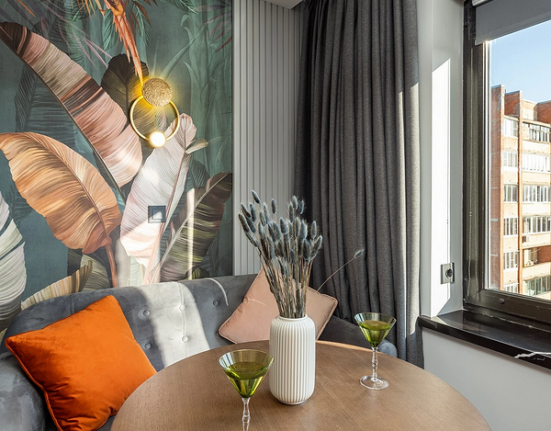
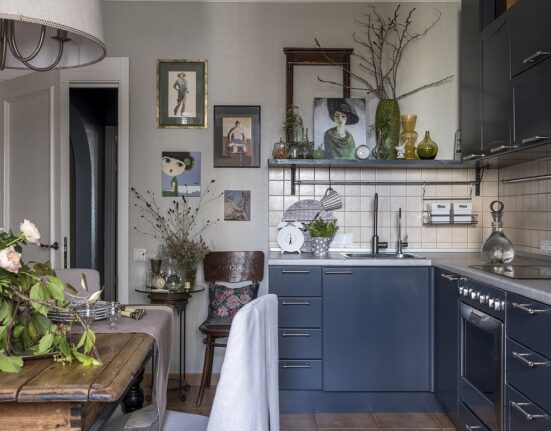
Leave feedback about this